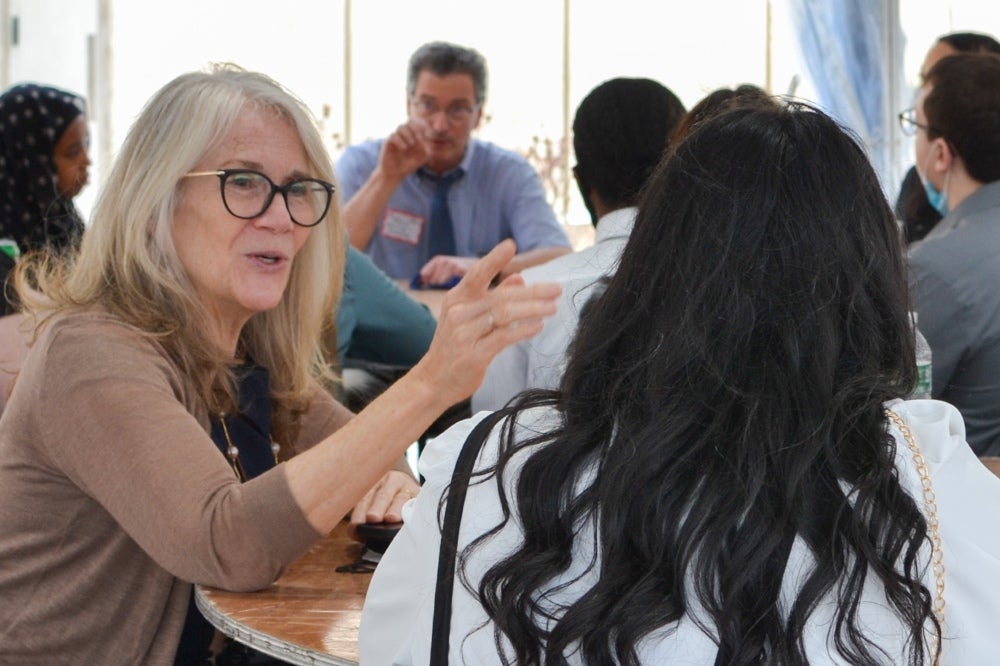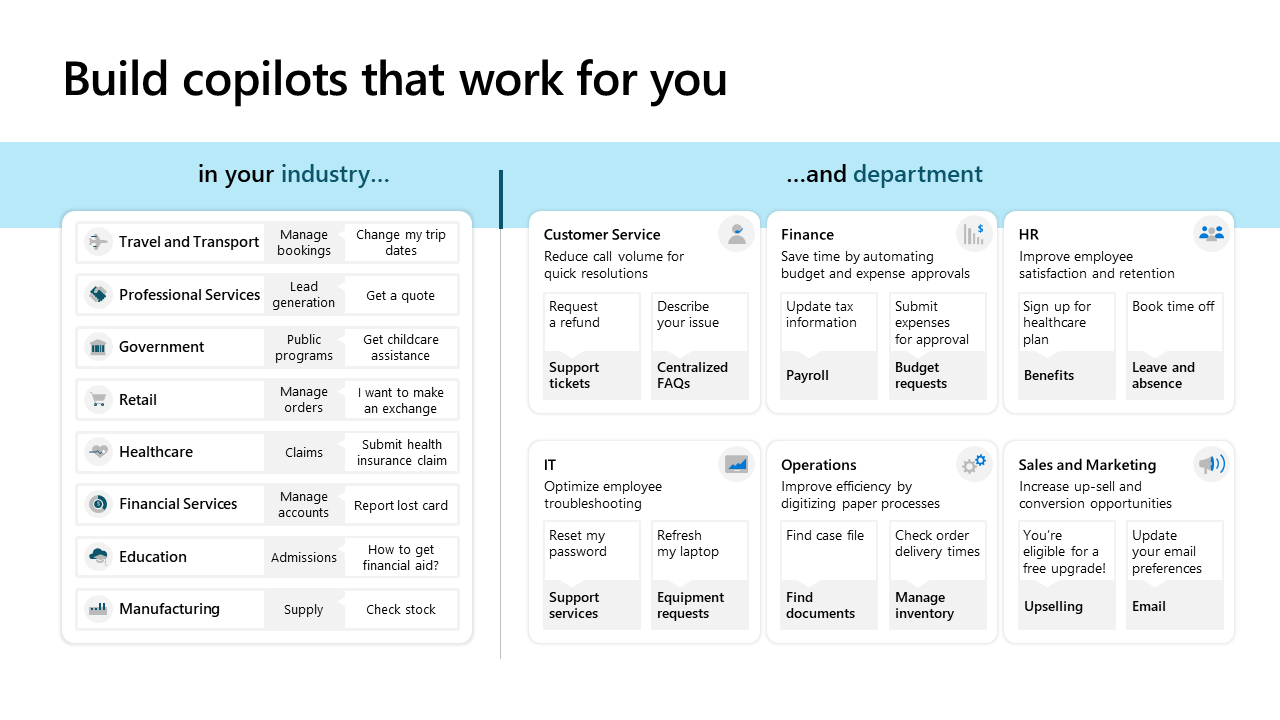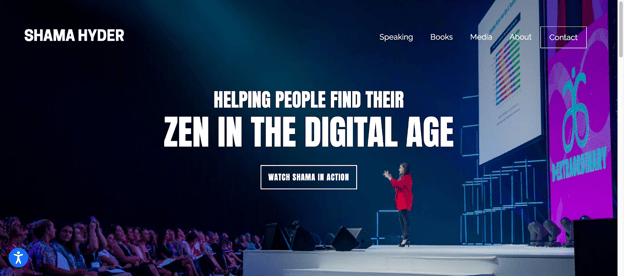Skip navigation

- Spring Updates
- For Employers
- In the Know
- Make An Appointment
- Internships
- Employer Connections
- CCE Programs
- Funding Programs
- Drop-in Hours
- Career Counseling Appointments
- Practice Interviews
- Programs & Services
- Design Your Next Steps
- Resumes & CVs
- Cover Letters
- Negotiating
- Career Advancement
- Graduate School
- Premium Resources
- Communications & Media
- Engineering & Technology
- Environment & Sustainability
- Financial Services
- International Affairs
- Non-Profits & Social Justice
- Psychology, Counseling & Social Work
- Ways to Gain Experience
- Career Assessments
- Connect With Alumni
- Student Experiences
- First-Generation/Low-Income Students
- International Students
- Students with Disabilities
- Veteran Students
- LGBTQ Students
- Visiting Students
- Students of Color

How to Write a Personal Statement for a PhD Program Application
Personal statement guidelines, general guidelines to keep in mind:.
- One size does not fit all : Tailor your personal statement to each program and department you are applying to. Do your research to learn what is unique about each of your choices and highlight how this particular program stands out.
- Yes, it’s personal : Showcase your unique strengths and accomplishments. Explain what influenced your personal decisions to pursue the program. Ask yourself, could this be applied to your friend or neighbor? If so, you need to be more specific and provide examples. Saying that you are a “good scientist” isn’t enough. Provide examples of your previous research experience, projects you’ve completed, and what technical skills you learned. Explain how you overcame any challenges along the way.
- Set aside enough time : Although personal statements are generally short in length (approx. 700 words; 1-2 pages), give yourself ample time to write a strong, well-written statement. It takes more time than you think to develop a final draft for submission.
- Focus on your spelling, grammar, and vocabulary : It’s important to present a well-written statement with good grammar and vocabulary. Write concrete, succinct sentences that flow well. Avoid flowery language. Visit the Writing Center for additional review and feedback.
- Proofread one more time: Check your grammar and spelling again before submitting your final draft. Ask a friend, professor, or advisor to proofread your final draft one more time before sending it in.
YOUR PERSONAL STATEMENT SHOULD ANSWER THE FOLLOWING QUESTIONS:
- Why do you want to complete further research in this field? Write down a list of reasons as to why you are interested in pursuing further study in the field. When did you become interested in the field and what knowledge have you gained so far? Describe how your previous work provided the foundation and for further study.
- Why have you chosen to apply to this particular university ? Does the institution have a particular curriculum, special research facilities/equipment, or interesting research that appeal to you?
- What are your strengths ? Demonstrate how you stand out from other candidates. Highlight relevant projects, dissertations thesis or essays that demonstrate your academic skills and creativity. Include IT skills, research techniques, awards, or relevant traveling/ study abroad experience.
- What are your transferable skills? Be sure to emphasize transferable skills such as communication, teamwork, and time management skills. Give examples of how you have demonstrated each of these with specific examples.
- How does this program align with your career goals? It’s okay if you don’t know the exact career path you plan to take after completing your PhD. Provide an idea of the direction you would like to take. This demonstrates commitment and dedication to the program.
ADDITIONAL RESOURCES
For examples of successful personal statements, visit the Online Writing Lab (OWL) .
Privacy Policy Accessibility Notice of Non-Discrimination Terms of Use
Have a language expert improve your writing
Run a free plagiarism check in 10 minutes, generate accurate citations for free.
- Knowledge Base
- Applying to graduate school
- How to Write Your Personal Statement | Strategies & Examples
How to Write Your Personal Statement | Strategies & Examples
Published on February 12, 2019 by Shona McCombes . Revised on July 3, 2023.
A personal statement is a short essay of around 500–1,000 words, in which you tell a compelling story about who you are, what drives you, and why you’re applying.
To write a successful personal statement for a graduate school application , don’t just summarize your experience; instead, craft a focused narrative in your own voice. Aim to demonstrate three things:
- Your personality: what are your interests, values, and motivations?
- Your talents: what can you bring to the program?
- Your goals: what do you hope the program will do for you?
This article guides you through some winning strategies to build a strong, well-structured personal statement for a master’s or PhD application. You can download the full examples below.
Urban Planning Psychology History
Table of contents
Getting started with your personal statement, the introduction: start with an attention-grabbing opening, the main body: craft your narrative, the conclusion: look ahead, revising, editing, and proofreading your personal statement, frequently asked questions, other interesting articles.
Before you start writing, the first step is to understand exactly what’s expected of you. If the application gives you a question or prompt for your personal statement, the most important thing is to respond to it directly.
For example, you might be asked to focus on the development of your personal identity; challenges you have faced in your life; or your career motivations. This will shape your focus and emphasis—but you still need to find your own unique approach to answering it.
There’s no universal template for a personal statement; it’s your chance to be creative and let your own voice shine through. But there are strategies you can use to build a compelling, well-structured story.
The first paragraph of your personal statement should set the tone and lead smoothly into the story you want to tell.
Strategy 1: Open with a concrete scene
An effective way to catch the reader’s attention is to set up a scene that illustrates something about your character and interests. If you’re stuck, try thinking about:
- A personal experience that changed your perspective
- A story from your family’s history
- A memorable teacher or learning experience
- An unusual or unexpected encounter
To write an effective scene, try to go beyond straightforward description; start with an intriguing sentence that pulls the reader in, and give concrete details to create a convincing atmosphere.
Strategy 2: Open with your motivations
To emphasize your enthusiasm and commitment, you can start by explaining your interest in the subject you want to study or the career path you want to follow.
Just stating that it interests you isn’t enough: first, you need to figure out why you’re interested in this field:
- Is it a longstanding passion or a recent discovery?
- Does it come naturally or have you had to work hard at it?
- How does it fit into the rest of your life?
- What do you think it contributes to society?
Tips for the introduction
- Don’t start on a cliche: avoid phrases like “Ever since I was a child…” or “For as long as I can remember…”
- Do save the introduction for last. If you’re struggling to come up with a strong opening, leave it aside, and note down any interesting ideas that occur to you as you write the rest of the personal statement.
Once you’ve set up the main themes of your personal statement, you’ll delve into more detail about your experiences and motivations.
To structure the body of your personal statement, there are various strategies you can use.
Strategy 1: Describe your development over time
One of the simplest strategies is to give a chronological overview of key experiences that have led you to apply for graduate school.
- What first sparked your interest in the field?
- Which classes, assignments, classmates, internships, or other activities helped you develop your knowledge and skills?
- Where do you want to go next? How does this program fit into your future plans?
Don’t try to include absolutely everything you’ve done—pick out highlights that are relevant to your application. Aim to craft a compelling narrative that shows how you’ve changed and actively developed yourself.
My interest in psychology was first sparked early in my high school career. Though somewhat scientifically inclined, I found that what interested me most was not the equations we learned about in physics and chemistry, but the motivations and perceptions of my fellow students, and the subtle social dynamics that I observed inside and outside the classroom. I wanted to learn how our identities, beliefs, and behaviours are shaped through our interactions with others, so I decided to major in Social Psychology. My undergraduate studies deepened my understanding of, and fascination with, the interplay between an individual mind and its social context.During my studies, I acquired a solid foundation of knowledge about concepts like social influence and group dynamics, but I also took classes on various topics not strictly related to my major. I was particularly interested in how other fields intersect with psychology—the classes I took on media studies, biology, and literature all enhanced my understanding of psychological concepts by providing different lenses through which to look at the issues involved.
Strategy 2: Own your challenges and obstacles
If your path to graduate school hasn’t been easy or straightforward, you can turn this into a strength, and structure your personal statement as a story of overcoming obstacles.
- Is your social, cultural or economic background underrepresented in the field? Show how your experiences will contribute a unique perspective.
- Do you have gaps in your resume or lower-than-ideal grades? Explain the challenges you faced and how you dealt with them.
Don’t focus too heavily on negatives, but use them to highlight your positive qualities. Resilience, resourcefulness and perseverance make you a promising graduate school candidate.
Growing up working class, urban decay becomes depressingly familiar. The sight of a row of abandoned houses does not surprise me, but it continues to bother me. Since high school, I have been determined to pursue a career in urban planning. While people of my background experience the consequences of urban planning decisions first-hand, we are underrepresented in the field itself. Ironically, given my motivation, my economic background has made my studies challenging. I was fortunate enough to be awarded a scholarship for my undergraduate studies, but after graduation I took jobs in unrelated fields to help support my parents. In the three years since, I have not lost my ambition. Now I am keen to resume my studies, and I believe I can bring an invaluable perspective to the table: that of the people most impacted by the decisions of urban planners.
Strategy 3: Demonstrate your knowledge of the field
Especially if you’re applying for a PhD or another research-focused program, it’s a good idea to show your familiarity with the subject and the department. Your personal statement can focus on the area you want to specialize in and reflect on why it matters to you.
- Reflect on the topics or themes that you’ve focused on in your studies. What draws you to them?
- Discuss any academic achievements, influential teachers, or other highlights of your education.
- Talk about the questions you’d like to explore in your research and why you think they’re important.
The personal statement isn’t a research proposal , so don’t go overboard on detail—but it’s a great opportunity to show your enthusiasm for the field and your capacity for original thinking.
In applying for this research program, my intention is to build on the multidisciplinary approach I have taken in my studies so far, combining knowledge from disparate fields of study to better understand psychological concepts and issues. The Media Psychology program stands out to me as the perfect environment for this kind of research, given its researchers’ openness to collaboration across diverse fields. I am impressed by the department’s innovative interdisciplinary projects that focus on the shifting landscape of media and technology, and I hope that my own work can follow a similarly trailblazing approach. More specifically, I want to develop my understanding of the intersection of psychology and media studies, and explore how media psychology theories and methods might be applied to neurodivergent minds. I am interested not only in media psychology but also in psychological disorders, and how the two interact. This is something I touched on during my undergraduate studies and that I’m excited to delve into further.
Strategy 4: Discuss your professional ambitions
Especially if you’re applying for a more professionally-oriented program (such as an MBA), it’s a good idea to focus on concrete goals and how the program will help you achieve them.
- If your career is just getting started, show how your character is suited to the field, and explain how graduate school will help you develop your talents.
- If you have already worked in the profession, show what you’ve achieved so far, and explain how the program will allow you to take the next step.
- If you are planning a career change, explain what has driven this decision and how your existing experience will help you succeed.
Don’t just state the position you want to achieve. You should demonstrate that you’ve put plenty of thought into your career plans and show why you’re well-suited to this profession.
One thing that fascinated me about the field during my undergraduate studies was the sheer number of different elements whose interactions constitute a person’s experience of an urban environment. Any number of factors could transform the scene I described at the beginning: What if there were no bus route? Better community outreach in the neighborhood? Worse law enforcement? More or fewer jobs available in the area? Some of these factors are out of the hands of an urban planner, but without taking them all into consideration, the planner has an incomplete picture of their task. Through further study I hope to develop my understanding of how these disparate elements combine and interact to create the urban environment. I am interested in the social, psychological and political effects our surroundings have on our lives. My studies will allow me to work on projects directly affecting the kinds of working-class urban communities I know well. I believe I can bring my own experiences, as well as my education, to bear upon the problem of improving infrastructure and quality of life in these communities.
Tips for the main body
- Don’t rehash your resume by trying to summarize everything you’ve done so far; the personal statement isn’t about listing your academic or professional experience, but about reflecting, evaluating, and relating it to broader themes.
- Do make your statements into stories: Instead of saying you’re hard-working and self-motivated, write about your internship where you took the initiative to start a new project. Instead of saying you’ve always loved reading, reflect on a novel or poem that changed your perspective.
Your conclusion should bring the focus back to the program and what you hope to get out of it, whether that’s developing practical skills, exploring intellectual questions, or both.
Emphasize the fit with your specific interests, showing why this program would be the best way to achieve your aims.
Strategy 1: What do you want to know?
If you’re applying for a more academic or research-focused program, end on a note of curiosity: what do you hope to learn, and why do you think this is the best place to learn it?
If there are specific classes or faculty members that you’re excited to learn from, this is the place to express your enthusiasm.
Strategy 2: What do you want to do?
If you’re applying for a program that focuses more on professional training, your conclusion can look to your career aspirations: what role do you want to play in society, and why is this program the best choice to help you get there?
Tips for the conclusion
- Don’t summarize what you’ve already said. You have limited space in a personal statement, so use it wisely!
- Do think bigger than yourself: try to express how your individual aspirations relate to your local community, your academic field, or society more broadly. It’s not just about what you’ll get out of graduate school, but about what you’ll be able to give back.
You’ll be expected to do a lot of writing in graduate school, so make a good first impression: leave yourself plenty of time to revise and polish the text.
Your style doesn’t have to be as formal as other kinds of academic writing, but it should be clear, direct and coherent. Make sure that each paragraph flows smoothly from the last, using topic sentences and transitions to create clear connections between each part.
Don’t be afraid to rewrite and restructure as much as necessary. Since you have a lot of freedom in the structure of a personal statement, you can experiment and move information around to see what works best.
Finally, it’s essential to carefully proofread your personal statement and fix any language errors. Before you submit your application, consider investing in professional personal statement editing . For $150, you have the peace of mind that your personal statement is grammatically correct, strong in term of your arguments, and free of awkward mistakes.
A statement of purpose is usually more formal, focusing on your academic or professional goals. It shouldn’t include anything that isn’t directly relevant to the application.
A personal statement can often be more creative. It might tell a story that isn’t directly related to the application, but that shows something about your personality, values, and motivations.
However, both types of document have the same overall goal: to demonstrate your potential as a graduate student and s how why you’re a great match for the program.
The typical length of a personal statement for graduate school applications is between 500 and 1,000 words.
Different programs have different requirements, so always check if there’s a minimum or maximum length and stick to the guidelines. If there is no recommended word count, aim for no more than 1-2 pages.
If you’re applying to multiple graduate school programs, you should tailor your personal statement to each application.
Some applications provide a prompt or question. In this case, you might have to write a new personal statement from scratch: the most important task is to respond to what you have been asked.
If there’s no prompt or guidelines, you can re-use the same idea for your personal statement – but change the details wherever relevant, making sure to emphasize why you’re applying to this specific program.
If the application also includes other essays, such as a statement of purpose , you might have to revise your personal statement to avoid repeating the same information.
If you want to know more about college essays , academic writing , and AI tools , make sure to check out some of our other language articles with explanations, examples, and quizzes.
College essays
- College essay examples
- College essay format
- College essay style
- College essay length
- Diversity essays
- Scholarship essays
Academic writing
- Writing process
- Avoiding repetition
- Literature review
- Conceptual framework
- Dissertation outline
- Thesis acknowledgements
- Burned or burnt
- Canceled or cancelled
- Dreamt or dreamed
- Gray or grey
- Theater vs theatre
Cite this Scribbr article
If you want to cite this source, you can copy and paste the citation or click the “Cite this Scribbr article” button to automatically add the citation to our free Citation Generator.
McCombes, S. (2023, July 03). How to Write Your Personal Statement | Strategies & Examples. Scribbr. Retrieved March 20, 2024, from https://www.scribbr.com/graduate-school/personal-statement/
Is this article helpful?
Shona McCombes
Other students also liked, how to write a graduate school resume | template & example, how (and who) to ask for a letter of recommendation, master's vs phd | a complete guide to the differences, unlimited academic ai-proofreading.
✔ Document error-free in 5minutes ✔ Unlimited document corrections ✔ Specialized in correcting academic texts
Our cookies
We use cookies for three reasons: to give you the best experience on PGS, to make sure the PGS ads you see on other sites are relevant , and to measure website usage. Some of these cookies are necessary to help the site work properly and can’t be switched off. Cookies also support us to provide our services for free, and by click on “Accept” below, you are agreeing to our use of cookies .You can manage your preferences now or at any time.
Privacy overview
We use cookies, which are small text files placed on your computer, to allow the site to work for you, improve your user experience, to provide us with information about how our site is used, and to deliver personalised ads which help fund our work and deliver our service to you for free.
The information does not usually directly identify you, but it can give you a more personalised web experience.
You can accept all, or else manage cookies individually. However, blocking some types of cookies may affect your experience of the site and the services we are able to offer.
You can change your cookies preference at any time by visiting our Cookies Notice page. Please remember to clear your browsing data and cookies when you change your cookies preferences. This will remove all cookies previously placed on your browser.
For more detailed information about the cookies we use, or how to clear your browser cookies data see our Cookies Notice
Manage consent preferences
Strictly necessary cookies
These cookies are necessary for the website to function and cannot be switched off in our systems.
They are essential for you to browse the website and use its features.
You can set your browser to block or alert you about these cookies, but some parts of the site will not then work. We can’t identify you from these cookies.
Functional cookies
These help us personalise our sites for you by remembering your preferences and settings. They may be set by us or by third party providers, whose services we have added to our pages. If you do not allow these cookies, then these services may not function properly.
Performance cookies
These cookies allow us to count visits and see where our traffic comes from, so we can measure and improve the performance of our site. They help us to know which pages are popular and see how visitors move around the site. The cookies cannot directly identify any individual users.
If you do not allow these cookies we will not know when you have visited our site and will not be able to improve its performance for you.
Marketing cookies
These cookies may be set through our site by social media services or our advertising partners. Social media cookies enable you to share our content with your friends and networks. They can track your browser across other sites and build up a profile of your interests. If you do not allow these cookies you may not be able to see or use the content sharing tools.
Advertising cookies may be used to build a profile of your interests and show you relevant adverts on other sites. They do not store directly personal information, but work by uniquely identifying your browser and internet device. If you do not allow these cookies, you will still see ads, but they won’t be tailored to your interests.
How to write a PhD personal statement
16 th August 2022

- Post on Facebook
- Send to a friend
- Recommend 0
Not sure where to start when it comes to writing a PhD personal statement? We have put together a helpful article packed full of advice for writing your PhD personal statement (or cover letter), so you can approach the task with confidence. PhD personal statements are incredibly important bits of work, showing how suitable you are for studying within the department that you are applying to, so it’s wise to make sure you’ve done your absolute best – you only get to make your first impression once! Have a read of our useful PhD personal statement tips, make a cup of coffee, and start showing off your writing skills.
What is a PhD personal statement?
How do i write a phd personal statement, how should i structure a phd personal statement, what should i write in a phd personal statement, what style should i use for a phd personal statement, how should i check my phd personal statement, phd cover letter and personal statement tips.
When applying for a PhD course, you may have to submit a research proposal as well as a personal statement or cover letter.
The proposal details your research project (such as proposed methods, results and planned analysis) and why there is value in exploring it.
Your personal statement outlines why you are suitable for doctoral study. In addition, it should say why you’re interested in the specific PhD with that particular department and how your experiences can add to it.
Sometimes you only have to submit a proposal or a personal statement. If you have to submit both, be sure that they clearly cover these separate areas.
Your PhD application is very different from an application you may have made before through UCAS. It goes directly to the university and needs to be fully tailored to what the department is looking for. It’s similar to a job application.
If you haven’t already, get in touch with the PhD supervisors or other contacts within the department you want to work in. They regularly need PhD students to support their work, so they will probably be happy to help you with your application.
When planning what to write, read all relevant information about the course and any guidance from the university – for example, lists of desirable criteria, or a person specifications. You can use each criterion as a heading and make bullet points on what to write under each one.
- An introduction that outlines why you want to do the PhD
- Middle paragraphs that say how your interests and experiences make you right for doctoral study, and why the university department is a suitable fit for you
- A concluding paragraph that summarises why you’re the best person for the course
Aim to explain how your skills and experience make you a suitable candidate for this particular PhD at this specific university.
- Why should you be completing research in this area?
- What are your strengths and achievements?
- What are your influences?
- Why is this university the right one for your project?
- Why do you want to work with this team?
- Make sure that you give evidence and not just state points, especially if the criteria are specific. What have you done to match the requirements?
You can discuss your wider achievements or extracurricular activities, but try to keep it suited to the PhD. If you want, add information about gaps in your CV or any other issues that are relevant.
If you're applying for a fellowship (a funded PhD), you should tailor your application to the funder. Spend enough time researching the fellowship so you talk about why it will be beneficial to you.
Aim to be concise in your writing. The university may set a limit on the word count, but if not, your personal statement should ideally be no longer than one side of A4. Be concise and make every word count.
Your statement should reflect the academic nature of the writing you’ll be doing in the PhD. For example, if your work is scientific, the people who will read your statement want to see that you can provide evidence and an explanation with each point you make.
For more information on how to write a personal statement, see our general postgraduate advice article.
Go to: How to write a postgraduate personal statement
When writing your application, spend plenty of time rewriting sections to perfect it. A good idea is to spend 20 minutes editing for every hour you spend writing. If you can, sit in a different environment to edit than where you write from, as this will help keep your mind clear and fresh.
Develop a strong academic CV – this is what admissions tutors will usually look at before reading your personal statement. Use the CV to list your experiences, and don’t repeat the same information in your statement.
Start putting your application together early, even as early as a year before the PhD will begin. This will give you time to contact supervisors. Your applications may be due in January before you start, so you’ll need to set aside plenty of time if you’re applying for funding.
Next: Read more about Mistakes to avoid on your postgraduate application
DON'T MISS OUT
Receive regular newsletters packed with useful tips.
Converting a Postgraduate Certificate to a Masters
Certificates are a perfect stepping stone to a Masters degree as you’ll not only...
5 Reasons to do a Postgraduate Diploma
These days, many students wish to further their study after graduation. ...
Guide to the PGCE
A PGCE, short for Postgraduate Certificate in Education, is a higher-level postgraduate...
Similar articles and videos
Best universities for aeronautical and aerospace engineering, best universities for marketing, best universities for chemistry, best universities for sports science, don't miss out.
Latest information about COVID-19
Writing Your Personal Statements
Your personal statement must demonstrate to the admissions committee that you have considered graduate school and their specific program seriously. It’s your opportunity to summarize your academic and research experiences. You must also communicate how your experiences are relevant to preparing you for the graduate degree that you will be pursuing and explain why a given program is the right one for you.
The personal statement is where you highlight your strengths. Make your strengths absolutely clear to the reviewers, because they will often be reading many other statements. Your self-assessments and honest conversations with peers and advisors should have also revealed your strengths. But you must also address (not blame others for) weaknesses or unusual aspects of your application or academic background.
Your personal statement should focus on two main aspects: your competence and commitment.
1. Identify your strengths in terms of competence that indicate that you will succeed in the grad program and provide examples to support your claims. Start your statement by describing your strengths immediately. Because faculty will be reading many statements, it’s important to start off with your strengths and not “bury your lede.” Consider traits of successful graduate students from your informational interviews, and identify which of these traits you have. These traits could involve research skills and experiences, expertise in working with techniques or instruments, familiarity with professional networks and resources in your field, etc.
- Check your responses from the exercises in the self-assessment section. You may wish to consult notes from your informational interviews and your Seven Stories . Write concise summaries and stories that demonstrate your strengths, e.g. how your strengths helped you to achieve certain goals or overcome obstacles.
- Summarize your research experience(s). What were the main project goals and the “big picture” questions? What was your role in this project? What did you accomplish? What did you learn, and how did you grow as a result of the experience(s)?

My research examines the interplay between U.S. domestic politics and foreign policy during the Cold War. As a native New Yorker, I saw firsthand how dramatically my city changed after 9/11, which prompted my early interest in U.S. policy at home and abroad. As an undergraduate at the City College of New York, I planned to study international relations with a focus on U.S. foreign affairs. I also quickly became involved in student activist groups that focused on raising awareness about a wide range of human rights issues, from the Syrian refugee crisis to asylum seekers from Central America.
The more I learned about the crises in the present, the more I realized that I needed a deeper understanding of the past to fully grasp them. I decided to pursue a PhD in history in order to gain a clearer understanding of human rights issues in the present and to empower young student-activists like myself.
— Vannessa Velez, PhD candidate in History
Addressing weaknesses or unusual aspects
- Identify weaknesses or unusual aspects in your application—e.g., a significant drop in your GPA during a term; weak GRE scores; changes in your academic trajectory, etc. Don’t ignore them, because ignoring them might be interpreted as blind spots for you. If you’re unsure if a particular issue is significant enough to address, seek advice from faculty mentors.
- Explain how you’ll improve and strengthen those areas or work around your weakness. Determine how you will address them in a positive light, e.g., by discussing how you overcame obstacles through persistence, what you learned from challenges, and how you grew from failures. Focusing on a growth mindset or grit and this blog on weaknesses might also help.
- Deal with any significant unusual aspects later in the statement to allow a positive impression to develop first.
- Explain, rather than provide excuses—i.e., address the issue directly and don’t blame others (even if you believe someone else is responsible). Draft it and get feedback from others to see if the explanation is working as you want it to.
- Provide supporting empirical evidence if possible. For example, “Adjusting to college was a major step for me, coming from a small high school and as a first-generation college student. My freshman GPA was not up to par with my typical achievements, as demonstrated by my improved GPA of 3.8 during my second and third years in college."
- Be concise (don’t dwell on the issues), but also be complete (don’t lead to other potentially unanswered questions). For example, if a drop in grades during a term was due to a health issue, explain whether the health issue is recurring, managed now with medication, resolved, etc.
2. Explain your commitment to research and their graduate program, including your motivation for why you are applying to this graduate program at this university. Be as specific as possible. Identify several faculty members with whom you are interested in working, and explain why their research interests you.
- Descriptions of your commitment should explain why you’re passionate about this particular academic field and provide demonstrations of your commitment with stories (e.g., working long hours to solve a problem, overcoming challenges in research, resilience in pursuing problems). Don’t merely assert your commitment.
- Explain why you are applying to graduate school, as opposed to seeking a professional degree or a job. Discuss your interest and motivation for grad school, along with your future career aspirations.

I am definitely not your traditional graduate student. As a biracial (Native American and white), first-generation PhD student from a military family, I had very limited guidance on how best to pursue my education, especially when I decided that graduate school was a good idea. I ended up coming to this PhD in a very circuitous manner, stopping first to get a JD and, later, an MFA in Young Adult Literature. With each degree, I took time to work and apply what I’d learned, as a lawyer and as an educator. Each time, I realized that I was circling around questions that I couldn’t let go of—not just because I found them to be fascinating, but because I did (and still do!) feel that my research could help to bridge a gap that desperately needs bridging. Because my work is quite interdisciplinary, I strongly feel that I wouldn’t have been able to pursue this line of research without the degrees and life experience I gained before coming to this program.
— Jamie Fine, PhD candidate in Modern Thought and Literature
Statement of Purpose: subtle aspects
- Think in terms of engaging faculty in a conversation rather than pleading with them that you should be admitted. Ask reviewers to read drafts with this concern in mind.
- With later drafts, try developing an overall narrative theme. See if one emerges as you work.
- Write at least 10 drafts and expect your thinking and the essay to change quite a bit over time.
- Read drafts out loud to help you catch errors.
- Expect the "you' that emerges in your essay to be incomplete. . . that’s OK.
- You’re sharing a professional/scholarly slice of "you."
- Avoid humor (do you really know what senior academics find funny?) and flashy openings and closings. Think of pitching the essay to an educated person in the field, but not necessarily in your specialty. Avoid emotionally laden words (such as "love" or "passion"). Remember, your audience is a group of professors! Overly emotional appeals might make them uncomfortable. They are looking for scholarly colleagues.
© Stanford University, Stanford, California 94305

What Is a PhD Personal Statement?
How to structure your personal statement, final thoughts, phd personal statements.
Updated March 14, 2023

When applying for a PhD position, a personal statement is often required. This can be the case whether you are applying for an advertised PhD research project or with a personally devised project.
This personal statement is separate from your PhD research proposal, which will go into much greater detail about the PhD project you are proposing or applying to undertake.
This article will delve into what to your PhD personal statement should contain and how to structure it for the best chance of success.
A PhD personal statement will support your application and is intended to shed more light on your motivations, academic background/ achievements and personal strengths .
Your statement will most likely be read by the admissions tutor for the department, who, based on your statement and research proposal, will decide whether your application should progress to the next stage of the process.
A personal statement will not always be required, so make sure to check the requirements for your institution and department.
What Should a PhD Personal Statement Contain?
When writing your PhD personal statement, you will need to convey your suitability for the programme or position, indicating that you have the academic ability, background knowledge and drive to take on a project of this level of complexity.
Statements are expected to be heavily related to the discipline and research angle being proposed. Your statement should draw out the strands of your previous exploration and research and illustrate what led you to apply to complete this particular PhD project.
It should discuss your interest in the subject matter, your academic interests within the field and your motivations for applying to the institution in question.
Below is a list of topics that need to be addressed in your personal statement .
The examples provided are for illustrative purposes only. It is important that your writing is grounded in your own experiences and aspirations, and consistently linked to your research proposal.
1. Why You Want to Do This PhD
It is important to talk about your motivations for undertaking the project, along with an awareness of the challenges you may experience, as this will display your drive for completing your research.
Directly reference your research proposal, talking about how your current or previous studies relate and have prepared you to undertake this project.
The strongest argument for why you want to undertake the PhD will come from the arc of your academic research and displaying a genuine enthusiasm for advancing the research of your chosen field.
During my master’s degree at the University of Nottingham, I had two primary focuses: cultural behaviours and social media impacts. I was interested in how culture reacts under new stimuli, so I wrote my dissertation on how cultural practices can be newly read through the lens of media platforms. My proposed research proposal takes this theoretical and desk-based research a step further, exploring the reflections of the specific cultural practice of...
2. How Your Work Will Benefit the University
When applying for a PhD, what you will bring to the university as a junior academic is an important factor in the decision-making process. You will not just be a student but a member of the department, most likely with teaching responsibilities.
The faculty will want to know that you can meaningfully contribute to the department through both your research and teaching.
If your work links into other PhD projects currently being supervised, or to the research of a senior academic or professor, it is good to indicate these connections and the potential they hold – whether this is in terms of supportive research, a complementary strand or a new angle or perspective.
If there is an academic whose work you are particularly interested in and you have not already indicated that you would like the opportunity to work alongside them, highlight this. Display that you are knowledgeable about the department’s current research interests, specialities and standing.
Since beginning my MSc research and developing a more specific interest in mangrove restoration, I have closely followed the research being conducted by Professor Stephens into restoration and wave attenuation. As I subsequently elaborate upon in my research proposal, I believe that my project fruitfully intersects with this research. It aims to make a meaningful contribution to a department world-renowned for its research into marine and coastal climate change impacts.
3. Why You Want to Study for a PhD at This University
It is important to convey why you want to conduct your research specifically at the institution you are applying to. Admissions will want to know that you have thought carefully about your application and know exactly what undertaking a PhD with their department will involve.
Conveying this intersects with the sentiments of the above point, as you should display that you have investigated the work of the professors in the department and are aware of any individual research groups or projects that relate to your work. These intersections help to show why the university is the best choice for you.
I believe that the University of Cardiff offers the best reciprocal environment in which to grow and diversify my approach to this research. Working alongside my supervisor, I intend to tap into the departmental expertise on biodiversity mapping and – using the framework of the 2019 report by Fischer, Raymond and Wills – reveal new insights by building upon the current research.
4. Why You Are the Best Candidate
The PhD personal statement is an opportunity to promote yourself, so it needs to be specific, personal and unique – nobody else has your history, aspirations or skill set, so explain what it is about you that makes you best suited to this endeavour.
When stating that you possess certain skills, back them up with concrete examples or explanations that are unique to you.
Be wary of making your personal statement too general or simply writing what you believe the admissions team want to hear. There are no correct answers, perfect CVs or ideal academic paths to have followed to reach this point. Your personal statement should reflect your journey and what you have gained from it, segues and unconventional routes included.
During my English Literature master’s degree, I focused on videogames and late medieval literature. I could see at that point that literary studies had a lot to offer the study of games and that games provided interesting new angles for applying longstanding theoretical approaches and fields. This led me to complete a further master’s degree in videogames as I sought to apply my research in a more specific and digitally focused arena. I found, because of my background in humanities and literary theory, that I possessed a perspective that my fellow empirically-minded colleagues, with backgrounds in coding, lacked. Using this unique perspective, I am now seeking to develop the research of my master’s dissertation through a PhD project

5. What You Learned During Your past Degrees and the Skills You Developed
To get to this stage, you will have already spent many years devoted to studying and growing your interest in your subject matter, so sell yourself and your talents. Think about the individual and group projects you have undertaken and the skills they helped you to develop and hone.
Remember to be specific and relate your skill set back to your proposed PhD project. For example, talk about the methodological approaches you have used previously to yield results, the new connections and collaboration you fostered across disciplines, or the positive impact made by projects you were involved in.
Your examples will vary greatly depending upon your academic background and the PhD you wish to complete but, regardless of topic, it is important to reveal your high level of skill and competence.
During my MSc, I conducted fieldwork in [location] and gained direct experience of collecting samples for paleolimnological analysis. I developed an aptitude for rapid algal species analysis and enjoyed the challenge of comparing this population data across cores and sample locations. This practical background has enabled me to be confident in my ability to source and analyse the sediment cores I require for this PhD project.
6. Any Explanations for Lower Grades (If Applicable)
If you have any extenuating circumstances for any results or grades, do not be afraid to explain the situation in your statement. Be honest about your struggles or challenges and seek to convey how you have grown as a consequence of these.
7. Your Future Plans
It is important to have thought carefully about your plans for life after your doctorate, as displaying clear goals will help the admissions team to determine that you have the correct motivations for applying.
Having a considered path you intend to follow beyond your proposed research gives confidence in your dedication to the project. Someone with articulated ambitions is more likely to be committed to the programme in the face of challenges.
If you wish to pursue a career in academia, as many PhD graduates do, show that you are aware of what this will involve. If you have a different industry path in mind, don’t be afraid to share it in your statement. PhDs can lead on to a variety of different career paths, so impress the admissions team with your aspirations of practical application.
The university will also want to ensure they can provide you with the skills and training you require to be successful and reach your goals. Letting the department know early on about your aspirations can help to ensure that the tailored support you will require can be provided.
After completing my PhD here, I intend to pursue an academic career within an architectural faculty in the UK. If the opportunity is available, I will be looking to apply for a lecturing position within this department. I am, however, acutely aware of the fierce competition in this field. I will be proactively seeking legacy funding for my research project as its potential to inform the typologies of housing used for settlement upgrading extends well beyond the timescale of this PhD.
If you are applying to more than one institution, which is highly likely, ensure that you tailor your personal statement to each university. Taking the time to craft a statement that speaks to the specificities of the university and the research of the teaching department will exponentially increase your chances of moving on to the next stage in the admissions process.
Below are our tips for structuring your PhD statement. You must ensure that you are aware of all the requirements set out by the university to which you are making your application, as these will influence the structure and content of the piece.
Step 1 . Structure
PhD applicants are expected to be highly adept at writing, so it is paramount that your personal statement is carefully constructed and reflects your ability for written communication .
The university you are applying to may provide you with a word count , or it may be stipulated by the space allowed on an online application form . Check if this is the case, as it is far easier to write to a specific word limit rather than having to make extreme edits to a piece that exceeds accepted length.
A PhD personal statement should be approximately one to one-and-a-half pages in length and be split into clear and concise paragraphs. If a sentence does not add value to the personal statement, omit it.
As a guide, aim for between four and six paragraphs , depending on their length. As previously indicated, it is best to keep paragraphs shorter rather than longer, as this will make your statement easier and more enjoyable for the admissions team to read.
Open your personal statement with a context-setting introduction regarding your academic interests and what has led you to apply for this research project. Seek to convey a real sense of yourself, so that those who read your statement can get a genuine sense of the student and junior academic you will be.
In the middle paragraphs , explore your motivations in greater detail, along with the qualities that make you a suitable candidate– with examples of when you displayed them.
It is important to provide a closing paragraph , bringing together the strands in your statement to solidly iterate why you are the right candidate.
Although it is best to avoid clichés and keep your writing original and interesting, conclude your personal statement by thanking the admissions tutor for taking the time to read your statement and considering your application.
Step 2 . Tone
When writing your statement, use a formal tone , correct grammar and appropriate language.
Colloquial and familiar language should be avoided. It is important to talk about your past academic and, perhaps, fieldwork or research experiences, but keep these professional in tone rather than anecdotal.
Ask someone to read through your statement to sense-check the tone and language used. It is always good to get a new perspective, particularly on a piece you spent a long time crafting.
Ensure you thoroughly check your grammar and spelling using the spell check function on your computer and also by eye. If including complex academic terminology, double-check that your terms are spelt correctly and have not been mistyped or incorrectly recognised and changed by your computer.
Writing a personal statement that accurately reflects your achievements, abilities and drive to take on your PhD can be a difficult task.
It is important to leave yourself enough time to write a draft statement so you can receive outside feedback, review it yourself and make the necessary improvements to ensure your piece does your potential as a PhD student justice.
Demonstrate your suitability for doctoral work with a personal statement that is personal to you and your unique experience and skills. A carefully thought-out, well-structured and well-evidenced statement will sell yourself and your academic abilities.
Seek to connect with those who read your application, explaining why your journey has equipped you for completing a PhD you will be proud of.
You might also be interested in these other Wikijob articles:

Or explore the Postgraduate / PHD sections.

How to Write a Stand-Out Personal Statement for Your Graduate School Application

While deciding to embark on the path to graduate school is an exciting first step toward advancing your career, the application process can sometimes feel daunting and confusing.
One major part of the application that most schools require is a personal statement. Writing a personal statement can be an arduous task: After all, most people don’t necessarily enjoy writing about themselves, let alone at length.
A compelling personal statement, however, can help bring your application to the top of the admissions pile. Below, we’ve outlined what you need to know about crafting a personal statement to make your application shine.
What Is a Personal Statement?
The point of a personal statement is for the admissions board to gain a deeper understanding of who you are apart from your education and work experience. It explains why you’re the right fit for the program and a worthwhile applicant. It’s also an opportunity to highlight important factors that may not be readily available in the rest of your application.
A personal statement is different from a statement of purpose (if you’re asked for that as well). A statement of purpose will touch on your academic and career goals, as well as your past credentials. While those should also be discussed in your personal statement, it’s more about your life experiences and how they’ve shaped you and your journey to graduate school.
Questions to Ask Yourself Before Writing a Personal Statement
Before you start crafting your essay, there are a few prompts you can ask yourself to help clarify what you want to accomplish.
- What are the key points you want to communicate about yourself?
- What personal characteristics or skills do you have that make you a strong candidate for this field?
- What exactly are your career goals, and how does graduate school play into them?
- What have you learned about this field already? When did you first choose to follow this path, and what do you enjoy about it?
- What do you think is important for the admissions board to know specifically about you?
- Are there any discrepancies or causes for concern in your application you need to address? For example, is there a career and schooling gap, or a low GPA at one point? This is the time to discuss whether a personal hardship may have affected your academics or career.
- Have you dealt with any unusual obstacles or difficulties in your life? How have they affected and shaped you?
- What sets you apart and makes you unique from other graduate school applicants?
- What factors in your life have brought you to where you are today?
Top Tips for Writing a Graduate School Personal Statement
Pick a few points to emphasize about yourself . Introduce yourself to the admissions board. Select key factors about your background that you want the university to know — elements that reveal what kind of person you are and demonstrate why you’re a strong candidate for the school and field of study.
Be very specific . Again, a personal statement is all about communicating what distinguishes you from other applicants. To accomplish that, you need to share specific anecdotes that underscore your statements. If you say you’re a strong leader, present an example of a time you’ve proven that skill through work, school or your personal life. These specific, personal stories provide a deeper understanding of who you are and prove your intentions.
Do your research . Demonstrate what attracted you to the program. If there is a specific faculty member or class that caught your attention, or another aspect of the program that greatly interests you, convey it. This shows you’ve truly researched the school and have a passion for the program.
“Whatever the topic may be, I would recommend writing in a manner that reflects or parallels the institution’s and/or department’s missions, goals and values,” said Moises Cortés, a graduate/international credentials analyst for the Office of Graduate Admission at USC .
Address any gaps or discrepancies . Explain any factors that may have impacted your academic career. If you had an illness or any other personal hardships that affected your grades or work, discuss them. If there is a discrepancy between your grades and your test scores, you can also take the time to go over any extenuating circumstances.
Strike the right tone . While it’s important to give readers a glimpse of your personality, avoid oversharing or revealing intimate details of your life experiences. You should also avoid making jokes or using humorous cliches. Maintain a professional tone throughout your writing.
Start strong and finish strong . As with any piece of writing, you want to draw in your readers immediately. Make sure to start off with an interesting and captivating introduction. Similarly, your conclusion should be a well-written, engaging finish to the essay that highlights any important points.
“ For a personal statement, I think the first and last paragraphs are most important and should always relate the program they are applying to their own experiences and ideas,” Hoon H. Kang, a graduate/international credential analyst with the Office of Graduate Admission, told USC Online.
Proofread, proofread and proofread again . We can’t emphasize enough the importance of rereading your work. Your personal statement is also an analysis of your writing skills, so ensure you have proper grammar and spelling throughout. In addition, we recommend having multiple people look over your statement before submission. They can help with the proofreading (a second person always catches a mistake the writer may miss), give advice about the statement’s structure and content, and confirm it’s the proper recommended length.
Once you’ve considered all of the above and reviewed and edited your personal statement to perfection, it’s time to submit and check off any remaining application requirements, including your resume and letters of recommendation .
Personal statements are arguably one of the most challenging aspects of applying to graduate school, so make sure to revel in this accomplishment and acknowledge your successes.
For more information, visit the Office of Graduate Admission at USC and explore USC Online ’s master’s degrees, doctoral programs and graduate certificates.
- Undergraduates
- Ph.Ds & Postdocs
- Prospective Students & Guests
- What is a Community?
- Student Athletes
- First Generation and/or Low Income Students
- International Students
- LGBTQ Students
- Students of Color
- Students with Disabilities
- Student Veterans
- Exploring Careers
- Advertising, Marketing & PR
- Finance, Insurance & Real Estate
- General Management & Leadership Development Programs
- Law & Legal Services
- Startups, Entrepreneurship & Freelance Work
- Environment, Sustainability & Energy
- Media & Communications
- Policy & Think Tanks
- Engineering
- Healthcare, Biotech & Global Public Health
- Life & Physical Sciences
- Programming & Data Science
- Graduate School
- Health Professions
- Business School
- Meet with OCS
- Student Organizations Workshop Request
- OCS Podcast Series
- Office of Fellowships
- Navigating AI in the Job Search Process
- Cover Letters & Correspondence
- Job Market Insights
- Professional Conduct & Etiquette
- Professional Online Identity
- Interview Preparation
- Resource Database
- Yale Career Link
- Jobs, Internships & Other Experiences
- Gap Year & Short-Term Opportunities
- Planning an International Internship
- Funding Your Experience
- Career Fairs/Networking Events
- On-Campus Recruiting
- Job Offers & Salary Negotiation
- Informational Interviewing
- Peer Networking Lists
- Building Your LinkedIn Profile
- YC First Destinations
- YC Four-Year Out
- GSAS Program Statistics
- Statistics & Reports
- Contact OCS
- OCS Mission & Policies
- Additional Yale Career Offices
Writing Personal Statements for Graduate School
- Share This: Share Writing Personal Statements for Graduate School on Facebook Share Writing Personal Statements for Graduate School on LinkedIn Share Writing Personal Statements for Graduate School on X
Personal Statements
Preparing a well-written and effective personal statement (sometimes referred to as statements of purpose or personal essays) that clearly articulates your preparation, goals, and motivation for pursuing that specific graduate degree is critically important. You will need to spend a considerable amount of time and effort in crafting these statements. The focus, structure, and length of personal statements vary from program to program. Some will have prompts or questions you need to answer, while others will leave the topic open-ended. The length varies widely as well. Read instructions carefully and make sure to adhere to all parameters laid out in the application guidelines.
Clear writing is the result of clear thinking. The first and most important task is to decide on a message. Consider carefully which two or three points you wish to impress upon the reader, remembering that your audience is composed of academics who are experts in their fields. Your statement should show that you are able to think logically and express your thoughts in a clear and concise manner. Remember that the reader already has a record of your activities and your transcript; avoid simply restating your resume and transcript. Writing your statement will take time; start early and give yourself more than enough time for revisions. If no prompts are given, you can use the questions below to begin brainstorming content to include in your statement; for more information, see our Writing Personal Statement presentation Prezi and our three-minute video on Writing Personal Statements .
- What experiences and academic preparation do you have that are relevant to the degree you’re seeking?
- Why are you choosing to pursue a graduate degree at this time?
- Why do you want to pursue this particular degree and how will this degree and the specific program fit into your career plans and your long-term goals?
- What specific topics are you aiming to explore and what does the current literature say about those topics?
After you’ve written a first draft, start the work of editing, refining, simplifying, and polishing. Provide specific examples that will help illustrate your points and convey your interests, intentions, and motivations. Is any section, sentence, or word superfluous, ambiguous, apologetic, or awkward? Are your verbs strong and active? Have you removed most of the qualifiers? Are you sure that each activity or interest you mention supports one of your main ideas? Spelling and grammatical errors are inexcusable. Don’t rely on spell-check to catch all errors; read your statement aloud and have it reviewed by multiple people whose opinion you trust. If possible, have your statement reviewed by a writing tutor. For individual assistance with writing your personal statement, consult with the writing tutor in your residential college or the Writing Center within the Yale Center for Teaching and Learning .
Office of Career Strategy
Visiting yale.

Writing an Effective Personal Statement for PhD Graduate Programs
Personal statements should be a reflection of your academic skills, success, and goals.
By Kaela Singleton Doctoral Candidate in Interdisciplinary Program in Neuroscience
A personal statement is one of the most important components of any doctoral graduate school application. This post will guide you with some general steps to get you started with generating a personal statement that is concise, reflects your academic success, and emphasizes your goals for graduate school. The individual graduate programs will provide writing prompts that detail exactly what you should address in your statement, so be sure you touch on everything that they want you to cover!
Before you start writing
- Update your CV: Having a complete list of your accomplishments will make it easier to include and exclude information from your personal statement. Your CV can be used as a timeline of your achievements, and therefore an outline to how your past experiences have prepared you for graduate school. For guidance on CV writing, see 7 Tips for Writing a Successful CV.
- Research Graduate Schools of Interest: Gain insight into the coursework, faculty, and student life for each program you are considering. Using the program website, generate a list of qualities that appeal to you about each school you’re applying to. Emphasize how and why these qualities contribute to your decision to apply to this program. This list should include research and faculty members that interest you as well as any other pros (i.e. location, cohort size, post-graduate jobs etc.)
- Create a team of editors: Your personal statement will be read by faculty members and graduate students studying different topics within the program. Therefore, your personal statement should be compelling to a broad audience. Ask peers, mentors and advisors from various disciplines well in advance to edit and provide feedback on your statement.
Now start writing
Introduction.
The goal is to engage your reader with a quick synopsis of who you are, what you want out of graduate school, and your qualifications to join this specific program.
- Introduce yourself and identify your academic interests: Provide a brief introduction of yourself and your academic interests. If you have a personal anecdote that explains how you became interested in science and research, start there. These “narrative hook” anecdotes engage the reader and set up a great platform to describe the motivation behind your experiences. Then go into your academic interests, which can be a couple of sentences broadly stating your research interests.
- Emphasize your skills and overall goals: Use both your research on the program and CV to highlight how your skill set will complement and grow from participation in this program. Speak in broad terms, showcasing how your goals align with the overall mission of the program.
THE BODY PARAGRAPHS
The goal is to expand on the points you mentioned within the introduction. Provide concrete examples of how past and present experiences led you to writing this application.
- Explain how you became interested in your particular scientific field: Highlight key moments that encouraged you to apply to graduate school. This can be the very start of your interests in the field or from skills and knowledge that you gained from internships, research experiences, or coursework and class discussions.
- Describe your prior research experiences and importantly what you learned from each experience: Provide a past experience where you used and developed a new skill that is pertinent to your ability to conduct research. Be sure to explain how this skill will be useful for your future in graduate school. It is critical to discuss what you learned from experience and to be as specific and concise as possible. For example: I worked with Dr. A at institution B. My work focused on C. The project entailed D, E and F techniques. From this experience, I learned G. This taught me F about my decision to attend graduate school.
In the conclusion paragraph, you should discuss what you learned about the graduate school program that you are applying for. Highlight specific faculty members or courses listed that excite you, and re-emphasize your goals.
- Summarize your qualifications and experiences: Bring everything together here. Emphasize the skills you currently have and how joining this program will aide in continuing your success.
- Personalize: In this final paragraph, include specific faculty and program qualities that appeal to you as an applicant. Show that you have researched specific faculty or courses that will aide in your future training. Also be sure to discuss your career goals.
- Edit: Proofread and edit. Send your statement out to friends, faculty advisors, and people outside of your discipline.
Personal statements should tell your story and be compelling across fields. Remember that a PhD program trains you to build and utilize scientific skills to advance research. You won’t want to try to convince the reader that you’ll cure cancer or discover the flu vaccine. Instead, focus on persuading readers that graduate training is right for you, and that the accompanying enrichment of your research skillset will help you reach your academic and professional goals.

More Career Advice
Learn from faculty, staff, postdocs, students and alumni through our Career Catalyst blog.
How to Write a Personal Statement for a PhD Program

Writing a personal statement for your PhD program is often a key requirement when applying to most institutions. The personal statement is considered to be a crucial part of the PhD application process, playing a major role in admission decisions. Even though it may seem difficult, writing a PhD personal statement gives you the chance to highlight your qualifications, share your reasons for wanting to pursue a PhD, and, most importantly, highlights your eligibility for the doctoral program.
In this article, we will discuss what a personal statement is, why it is needed, who will read it, and when to write it. We will also provide some tips and guidelines on how to write a successful personal statement for PhD application.
What is a personal statement and why is it needed?
Your personal statement is a key means through which the admissions committee gets to know more about you and your suitability for the PhD program. The statement should therefore demonstrate your motivations, relevant research and work experience, accomplishments, strengths, and your career goals. This is important to position yourself as an apt candidate for the chosen PhD program.
Who will read your personal statement and when to write it?
While the research proposal is considered the most important document in the PhD application process, some institutions also ask candidates to submit a personal statement. Your personal statement will likely be read by the admissions committee and the interview panelists. Along with other documents submitted during the application process, your personal statement plays a big role in assessing whether you meet the often-stringent eligibility criteria and evaluate if you are a suitable candidate for a doctoral program. Remember that panelists for your interview may also have questions for you based on their review of your personal statement, so be as honest as possible.
How to write a personal statement that makes an impact
The PhD personal statement should be concise and convey only the important aspects about your work and professional achievements. You should be aware that the personal statement would be read by a committee that will be evaluating many applications, so keep it short and ensure that it is aligned with the program requirements stated by the institution.
Generally, universities and institutions provide details about the required word count or length of a personal statement. While there is no perfect personal statement format, it is essential that you follow a structure to ensure logical flow. Include a good introduction of yourself followed by details of your research interests, relevant skills, and past experience in the discipline you have opted for.
What to include in a personal statement
- Reasons for pursuing a PhD: Your personal statement should clearly communicate the factors that encouraged you to apply for a PhD program. It should also convey how this chosen program builds on your previous experience and education.
- Relevant skills and competencies: The personal statement provides you with a good opportunity to communicate any international academic exposure, awards, research projects, and any other competencies or experience that may be relevant to the PhD program applied for.
- Address any gaps in your CV: Clearly explain the reasons behind any gaps or short breaks that you may have taken as you pursued your academic career. Also, remember to mention any changes made mid-way during your academic program. This ensures better transparency.
- Long-term career goals and aspirations: It is important to explain how your PhD will feed into your future career plans. To the admission committee, this will reflect your seriousness and commitment to the study program you have opted for.
Tips to keep in mind when writing a personal statement
Prepare a unique personal statement for each university.
Universities offering PhD programs will typically ask for different criteria or questions to be answered in the personal statement. Therefore, relying on creating a single personal statement that will be shared with different universities with only slight modifications may not prove to be effective. Take the time to write personal statements that address specific points required by each university that you apply to.
Avoid repetition
Always remember that a personal statement is very different from your research proposal. Focus on highlighting your goals, skills, accomplishments, and experiences that are relevant to your study program but be careful not to be repetitive. Also mention any challenges you faced and overcame along the way to showcase your problem-solving ability.
Invest sufficient time
Keep in mind that while writing the personal statement, you must provide key information about yourself in a way that will convince the admissions committee of your eligibility. However, this needs to be done in a concise, compelling way. While it might be tempting to write every small detail, be careful to only include points that highlight your candidacy. This requires time and careful consideration, so start the process early enough to write a clear, persuasive personal statement.
Avoid jargon and irrelevant details
Always keep in mind that the admissions committee has to handle numerous applications. Therefore, keep the information in your personal statement direct and to the point, avoiding complex technical jargon, big words, and/or flowery language.
Don’t skip editing and proofreading your work
Nothing is worse for your candidacy than poor language and difficult-to-read personal statements. So, ensure that the language, grammar, and syntax used in your personal statement is correct and devoid of any errors. It is always a good idea to share what you have written with your close associates for a final read through. Getting a second or third pair of eyes to check and help polish your personal statement can be especially helpful if you have English as a second language.
Finally, it’s important to remember that your personal statement should be the outcome of deep introspection as you take the next step in your career. It should be a good reflection of who you really are and what your aspirations are for the future, both in terms of what you want to study and how you want to steer your career in the future.
Paperpal is an AI writing assistant that help academics write better, faster with real-time suggestions for in-depth language and grammar correction. Trained on millions of research manuscripts enhanced by professional academic editors, Paperpal delivers human precision at machine speed.
Try it for free or upgrade to Paperpal Prime , which unlocks unlimited access to premium features like academic translation, paraphrasing, contextual synonyms, consistency checks and more. It’s like always having a professional academic editor by your side! Go beyond limitations and experience the future of academic writing. Get Paperpal Prime now at just US$12 a month!
Related Reads:
- Manuscript Withdrawal: Reasons, Consequences, and How to Withdraw Submitted Manuscripts
- 4 Key Writing Styles and Examples of Academic Writing
- How to Choose and Write Reasons Supporting Your Peer Reviewer Recommendations
- How to Write a Research Paper Title
Navigating Language Precision: Complementary vs. Complimentary
Sentence length: how to improve your research paper readability, you may also like, how to write an essay introduction (with examples)..., should you use ai tools like chatgpt for..., what are the benefits of generative ai for..., publish research papers: 9 steps for successful publications , how long should a chapter be, how to cite social media sources in academic writing , self-plagiarism in research: what it is and how..., 6 tips for post-doc researchers to take their..., 8 most effective ways to increase motivation for..., how to make your thesis supervision work for....
How to Write a Strong Personal Statement for Graduate School
- by Heidi Kerr and Paul David Terry
- November 10, 2020

You’ve made the exciting decision to pursue a graduate degree. Congratulations! There are a wide range of graduate programs to explore , and once you’ve selected the right program for you, it’s time to begin the graduate application process.
The statement of purpose and personal history statement are key components of the UC Davis graduate school application . With fewer than 4,000 characters allowed for each essay, these statements can seem particularly daunting. However, each one has a specific purpose for showcasing your academic journey and creating a holistic application.
Below, we’ve analyzed the differences between the statement of purpose and personal history statement and provided tips for writing these graduate school admissions essays.
Statement of Purpose and Personal History: What’s the Difference?

The statement of purpose shares your academic objectives with the admissions committee and explains why you want to obtain a graduate degree. The personal history statement provides background about who you are and how your experiences have shaped your interests and ability to overcome challenges. Each essay has specific goals to showcase your experience, passion and story.
How to Write a Strong Statement of Purpose
The statement of purpose should highlight your academic preparation , motivation and interests, along with any specializations and career goals that contribute to your program of study. As you write your statement of purpose, it should encompass some of the following:
- Academic and research experiences - Include any relevant academic studies or research pursuits, internships or employment, presentations, publications, teaching, and travel or study abroad experiences that prepare you for this graduate program. Explain your motivation or passion for these experiences and how they can enrich your graduate study.
- Interests, specializations, and career goals - Highlight your research interests, disciplinary subfields, area(s) of specialization, and professional objectives.
- Fit - Explain how your preparation, experiences, and interests match the specific resources and characteristics of your graduate program at UC Davis. Identify specific faculty within your desired graduate program with whom you would like to work and how their interests match your own.
The statement of purpose should also address why you want to pursue the particular graduate degree program at the university and what your goals are in pursuing a degree. Remember, the statement of purpose should explain exactly that, your purpose for becoming a graduate student. This is the primary way it stands apart from your personal history statement.
What to Include in Your Personal History Statement

The personal history statement helps the reader learn more about you as an individual and potential graduate student. Use this opportunity to describe how your personal background informs your decision to pursue a graduate degree. Tell a story that includes any experiences, challenges or opportunities relevant to your academic journey. Consider how your life experiences contribute to the social, intellectual, or cultural diversity within a campus community and your chosen field.
A strong personal history statement begins with an authentic voice and personal narrative. This can reflect your journey to graduate school, any obstacles you’ve encountered, and how you've overcome challenges. Talk about your personal goals and dreams. Explain what motivates and drives you toward this degree. The more your personal statement tells your school about you as an individual, the more it will stand out. Don't write something to impress someone else. This includes language, style and tone. Authenticity is important and resonates well. Tell the truth, in your voice, from your perspective. Use your story to connect.
More Tips and Resources for Applying to Graduate School
Applying to graduate school may be daunting to some, but UC Davis has a variety of resources to help you create a strong graduate school application. Check out the Applying to Graduate School: A Guide and Handbook for ideas and worksheets on how to construct your essays. Or visit our Office of Educational Opportunity and Enrichment Services website for more graduate school prep resources.
Paul David Terry is the assistant director of special interest and affinity networks and alumni diversity lead at the Cal Aggie Alumni Association. He oversees the UC Davis Health Improving OUTcomes blog and enjoys cycling and brewing ginger beer.
Heidi Kerr works as the content and media manager at UC Davis’ Graduate Studies. She has worked as a communications professional at multiple higher education institutions and is passionate about promoting student success.
The authors acknowledge current and former leaders from Pre-Graduate/Law Advising in Office of Educational Opportunity and Enrichment Services, especially Annalisa Teixeira, Ph.D. and Cloe Le Gall-Scoville, Ph.D., who granted us permission to reference Applying to Graduate School: A Guide and Workbook .
Subscribe to the Majors Blog
Primary Category
Testimonials
Free Resources
PrepScholar GRE Prep
Gre prep online guides and tips, 3 successful graduate school personal statement examples.
Looking for grad school personal statement examples? Look no further! In this total guide to graduate school personal statement examples, we’ll discuss why you need a personal statement for grad school and what makes a good one. Then we’ll provide three graduate school personal statement samples from our grad school experts. After that, we’ll do a deep dive on one of our personal statement for graduate school examples. Finally, we’ll wrap up with a list of other grad school personal statements you can find online.
Why Do You Need a Personal Statement?
A personal statement is a chance for admissions committees to get to know you: your goals and passions, what you’ll bring to the program, and what you’re hoping to get out of the program. You need to sell the admissions committee on what makes you a worthwhile applicant. The personal statement is a good chance to highlight significant things about you that don’t appear elsewhere on your application.
A personal statement is slightly different from a statement of purpose (also known as a letter of intent). A statement of purpose/letter of intent tends to be more tightly focused on your academic or professional credentials and your future research and/or professional interests.
While a personal statement also addresses your academic experiences and goals, you have more leeway to be a little more, well, personal. In a personal statement, it’s often appropriate to include information on significant life experiences or challenges that aren’t necessarily directly relevant to your field of interest.
Some programs ask for both a personal statement and a statement of purpose/letter of intent. In this case, the personal statement is likely to be much more tightly focused on your life experience and personality assets while the statement of purpose will focus in much more on your academic/research experiences and goals.
However, there’s not always a hard-and-fast demarcation between a personal statement and a statement of purpose. The two statement types should address a lot of the same themes, especially as relates to your future goals and the valuable assets you bring to the program. Some programs will ask for a personal statement but the prompt will be focused primarily on your research and professional experiences and interests. Some will ask for a statement of purpose but the prompt will be more focused on your general life experiences.
When in doubt, give the program what they are asking for in the prompt and don’t get too hung up on whether they call it a personal statement or statement of purpose. You can always call the admissions office to get more clarification on what they want you to address in your admissions essay.
Quick side note: we've created the world's leading online GRE prep program that adapts to you and your strengths and weaknesses. Not sure what to study? Confused by how to improve your score? We give you minute by minute guide.
You don't NEED a prep program to get a great GRE score. But we believe PrepScholar is the best GRE prep program available right now , especially if you find it hard to organize your study schedule and don't know what to study .
Click here to learn how you can improve your GRE score by 7 points, guaranteed .

What Makes a Good Grad School Personal Statement?
A great graduate school personal statement can come in many forms and styles. However, strong grad school personal statement examples all share the same following elements:
A Clear Narrative
Above all, a good personal statement communicates clear messages about what makes you a strong applicant who is likely to have success in graduate school. So to that extent, think about a couple of key points that you want to communicate about yourself and then drill down on how you can best communicate those points. (Your key points should of course be related to what you can bring to the field and to the program specifically).
You can also decide whether to address things like setbacks or gaps in your application as part of your narrative. Have a low GPA for a couple semesters due to a health issue? Been out of a job for a while taking care of a family member? If you do decide to explain an issue like this, make sure that the overall arc is more about demonstrating positive qualities like resilience and diligence than about providing excuses.
Specific Examples
A great statement of purpose uses specific examples to illustrate its key messages. This can include anecdotes that demonstrate particular traits or even references to scholars and works that have influenced your academic trajectory to show that you are familiar and insightful about the relevant literature in your field.
Just saying “I love plants,” is pretty vague. Describing how you worked in a plant lab during undergrad and then went home and carefully cultivated your own greenhouse where you cross-bred new flower colors by hand is much more specific and vivid, which makes for better evidence.
A strong personal statement will describe why you are a good fit for the program, and why the program is a good fit for you. It’s important to identify specific things about the program that appeal to you, and how you’ll take advantage of those opportunities. It’s also a good idea to talk about specific professors you might be interested in working with. This shows that you are informed about and genuinely invested in the program.
Strong Writing
Even quantitative and science disciplines typically require some writing, so it’s important that your personal statement shows strong writing skills. Make sure that you are communicating clearly and that you don’t have any grammar and spelling errors. It’s helpful to get other people to read your statement and provide feedback. Plan on going through multiple drafts.
Another important thing here is to avoid cliches and gimmicks. Don’t deploy overused phrases and openings like “ever since I was a child.” Don’t structure your statement in a gimmicky way (i.e., writing a faux legal brief about yourself for a law school statement of purpose). The first will make your writing banal; the second is likely to make you stand out in a bad way.
Appropriate Boundaries
While you can be more personal in a personal statement than in a statement of purpose, it’s important to maintain appropriate boundaries in your writing. Don’t overshare anything too personal about relationships, bodily functions, or illegal activities. Similarly, don’t share anything that makes it seem like you may be out of control, unstable, or an otherwise risky investment. The personal statement is not a confessional booth. If you share inappropriately, you may seem like you have bad judgment, which is a huge red flag to admissions committees.
You should also be careful with how you deploy humor and jokes. Your statement doesn’t have to be totally joyless and serious, but bear in mind that the person reading the statement may not have the same sense of humor as you do. When in doubt, err towards the side of being as inoffensive as possible.
Just as being too intimate in your statement can hurt you, it’s also important not to be overly formal or staid. You should be professional, but conversational.

Graduate School Personal Statement Examples
Our graduate school experts have been kind enough to provide some successful grad school personal statement examples. We’ll provide three examples here, along with brief analysis of what makes each one successful.
Sample Personal Statement for Graduate School 1
PDF of Sample Personal Statement 1 – Japanese Studies
For this Japanese Studies master’s degree, the applicant had to provide a statement of purpose outlining her academic goals and experience with Japanese and a separate personal statement describing her personal relationship with Japanese Studies and what led her to pursue a master’s degree.
Here’s what’s successful about this personal statement:
- An attention-grabbing beginning: The applicant begins with the statement that Japanese has never come easily to her and that it’s a brutal language to learn. Seeing as how this is an application for a Japanese Studies program, this is an intriguing beginning that makes the reader want to keep going.
- A compelling narrative: From this attention-grabbing beginning, the applicant builds a well-structured and dramatic narrative tracking her engagement with the Japanese language over time. The clear turning point is her experience studying abroad, leading to a resolution in which she has clarity about her plans. Seeing as how the applicant wants to be a translator of Japanese literature, the tight narrative structure here is a great way to show her writing skills.
- Specific examples that show important traits: The applicant clearly communicates both a deep passion for Japanese through examples of her continued engagement with Japanese and her determination and work ethic by highlighting the challenges she’s faced (and overcome) in her study of the language. This gives the impression that she is an engaged and dedicated student.
Overall, this is a very strong statement both in terms of style and content. It flows well, is memorable, and communicates that the applicant would make the most of the graduate school experience.

Sample Personal Statement for Graduate School 2
PDF of Sample Graduate School Personal Statement 2 – Musical Composition
This personal statement for a Music Composition master’s degree discusses the factors that motivate the applicant to pursue graduate study.
Here’s what works well in this statement:
- The applicant provides two clear reasons motivating the student to pursue graduate study: her experiences with music growing up, and her family’s musical history. She then supports those two reasons with examples and analysis.
- The description of her ancestors’ engagement with music is very compelling and memorable. The applicant paints her own involvement with music as almost inevitable based on her family’s long history with musical pursuits.
- The applicant gives thoughtful analysis of the advantages she has been afforded that have allowed her to study music so extensively. We get the sense that she is insightful and empathetic—qualities that would add greatly to any academic community.
This is a strong, serviceable personal statement. And in truth, given that this for a masters in music composition, other elements of the application (like work samples) are probably the most important. However, here are two small changes I would make to improve it:
- I would probably to split the massive second paragraph into 2-3 separate paragraphs. I might use one paragraph to orient the reader to the family’s musical history, one paragraph to discuss Giacomo and Antonio, and one paragraph to discuss how the family has influenced the applicant. As it stands, it’s a little unwieldy and the second paragraph doesn’t have a super-clear focus even though it’s all loosely related to the applicant’s family history with music.
- I would also slightly shorten the anecdote about the applicant’s ancestors and expand more on how this family history has motivated the applicant’s interest in music. In what specific ways has her ancestors’ perseverance inspired her? Did she think about them during hard practice sessions? Is she interested in composing music in a style they might have played? More specific examples here would lend greater depth and clarity to the statement.

Sample Personal Statement for Graduate School 3
PDF of Sample Graduate School Personal Statement 3 – Public Health
This is my successful personal statement for Columbia’s Master’s program in Public Health. We’ll do a deep dive on this statement paragraph-by-paragraph in the next section, but I’ll highlight a couple of things that work in this statement here:
Want to improve your GRE score by 7 points? We have the industry's leading GRE prep program. Built by world-class instructors with 99th percentile GRE scores , the program learns your strengths and weaknesses through machine learning data science, then customizes your prep program to you so you get the most effective prep possible.
Try our 5-day full access trial for free:
- This statement is clearly organized. Almost every paragraph has a distinct focus and message, and when I move on to a new idea, I move on to a new paragraph with a logical transitions.
- This statement covers a lot of ground in a pretty short space. I discuss my family history, my goals, my educational background, and my professional background. But because the paragraphs are organized and I use specific examples, it doesn’t feel too vague or scattered.
- In addition to including information about my personal motivations, like my family, I also include some analysis about tailoring health interventions with my example of the Zande. This is a good way to show off what kinds of insights I might bring to the program based on my academic background.

Grad School Personal Statement Example: Deep Dive
Now let’s do a deep dive, paragraph-by-paragraph, on one of these sample graduate school personal statements. We’ll use my personal statement that I used when I applied to Columbia’s public health program.
Paragraph One: For twenty-three years, my grandmother (a Veterinarian and an Epidemiologist) ran the Communicable Disease Department of a mid-sized urban public health department. The stories of Grandma Betty doggedly tracking down the named sexual partners of the infected are part of our family lore. Grandma Betty would persuade people to be tested for sexually transmitted diseases, encourage safer sexual practices, document the spread of infection and strive to contain and prevent it. Indeed, due to the large gay population in the city where she worked, Grandma Betty was at the forefront of the AIDS crises, and her analysis contributed greatly towards understanding how the disease was contracted and spread. My grandmother has always been a huge inspiration to me, and the reason why a career in public health was always on my radar.
This is an attention-grabbing opening anecdote that avoids most of the usual cliches about childhood dreams and proclivities. This story also subtly shows that I have a sense of public health history, given the significance of the AIDs crisis for public health as a field.
It’s good that I connect this family history to my own interests. However, if I were to revise this paragraph again, I might cut down on some of the detail because when it comes down to it, this story isn’t really about me. It’s important that even (sparingly used) anecdotes about other people ultimately reveal something about you in a personal statement.
Paragraph Two: Recent years have cemented that interest. In January 2012, my parents adopted my little brother Fred from China. Doctors in America subsequently diagnosed Fred with Duchenne Muscular Dystrophy (DMD). My parents were told that if Fred’s condition had been discovered in China, the (very poor) orphanage in which he spent the first 8+ years of his life would have recognized his DMD as a death sentence and denied him sustenance to hasten his demise.
Here’s another compelling anecdote to help explain my interest in public health. This is an appropriately personal detail for a personal statement—it’s a serious thing about my immediate family, but it doesn’t disclose anything that the admissions committee might find concerning or inappropriate.
If I were to take another pass through this paragraph, the main thing I would change is the last phrase. “Denied him sustenance to hasten his demise” is a little flowery. “Denied him food to hasten his death” is actually more powerful because it’s clearer and more direct.
Paragraph Three: It is not right that some people have access to the best doctors and treatment while others have no medical care. I want to pursue an MPH in Sociomedical Sciences at Columbia because studying social factors in health, with a particular focus on socio-health inequities, will prepare me to address these inequities. The interdisciplinary approach of the program appeals to me greatly as I believe interdisciplinary approaches are the most effective way to develop meaningful solutions to complex problems.
In this paragraph I make a neat and clear transition from discussing what sparked my interest in public health and health equity to what I am interested in about Columbia specifically: the interdisciplinary focus of the program, and how that focus will prepare me to solve complex health problems. This paragraph also serves as a good pivot point to start discussing my academic and professional background.
Paragraph Four: My undergraduate education has prepared me well for my chosen career. Understanding the underlying structure of a group’s culture is essential to successfully communicating with the group. In studying folklore and mythology, I’ve learned how to parse the unspoken structures of folk groups, and how those structures can be used to build bridges of understanding. For example, in a culture where most illnesses are believed to be caused by witchcraft, as is the case for the Zande people of central Africa, any successful health intervention or education program would of necessity take into account their very real belief in witchcraft.
In this paragraph, I link my undergraduate education and the skills I learned there to public health. The (very brief) analysis of tailoring health interventions to the Zande is a good way to show insight and show off the competencies I would bring to the program.
Paragraph Five: I now work in the healthcare industry for one of the largest providers of health benefits in the world. In addition to reigniting my passion for data and quantitative analytics, working for this company has immersed me in the business side of healthcare, a critical component of public health.
This brief paragraph highlights my relevant work experience in the healthcare industry. It also allows me to mention my work with data and quantitative analytics, which isn’t necessarily obvious from my academic background, which was primarily based in the social sciences.
Paragraph Six: I intend to pursue a PhD in order to become an expert in how social factors affect health, particularly as related to gender and sexuality. I intend to pursue a certificate in Sexuality, Sexual Health, and Reproduction. Working together with other experts to create effective interventions across cultures and societies, I want to help transform health landscapes both in America and abroad.
This final paragraph is about my future plans and intentions. Unfortunately, it’s a little disjointed, primarily because I discuss goals of pursuing a PhD before I talk about what certificate I want to pursue within the MPH program! Switching those two sentences and discussing my certificate goals within the MPH and then mentioning my PhD plans would make a lot more sense.
I also start two sentences in a row with “I intend,” which is repetitive.
The final sentence is a little bit generic; I might tailor it to specifically discuss a gender and sexual health issue, since that is the primary area of interest I’ve identified.
This was a successful personal statement; I got into (and attended!) the program. It has strong examples, clear organization, and outlines what interests me about the program (its interdisciplinary focus) and what competencies I would bring (a background in cultural analysis and experience with the business side of healthcare). However, a few slight tweaks would elevate this statement to the next level.

Graduate School Personal Statement Examples You Can Find Online
So you need more samples for your personal statement for graduate school? Examples are everywhere on the internet, but they aren’t all of equal quality.
Most of examples are posted as part of writing guides published online by educational institutions. We’ve rounded up some of the best ones here if you are looking for more personal statement examples for graduate school.
Penn State Personal Statement Examples for Graduate School
This selection of ten short personal statements for graduate school and fellowship programs offers an interesting mix of approaches. Some focus more on personal adversity while others focus more closely on professional work within the field.
The writing in some of these statements is a little dry, and most deploy at least a few cliches. However, these are generally strong, serviceable statements that communicate clearly why the student is interested in the field, their skills and competencies, and what about the specific program appeals to them.
Cal State Sample Graduate School Personal Statements
These are good examples of personal statements for graduate school where students deploy lots of very vivid imagery and illustrative anecdotes of life experiences. There are also helpful comments about what works in each of these essays.
Want to improve your GRE score by 7+ points?
Check out our best-in-class online GRE prep program . We guarantee your money back if you don't improve your GRE score by 7 points or more.
PrepScholar GRE is entirely online, and it customizes your prep program to your strengths and weaknesses . We also feature 2,000 practice questions , official practice tests, 150 hours of interactive lessons, and 1-on-1 scoring and feedback on your AWA essays.
Check out our 5-day free trial now:
However, all of these statements are definitely pushing the boundaries of acceptable length, as all are above 1000 and one is almost 1500 words! Many programs limit you to 500 words; if you don’t have a limit, you should try to keep it to two single-spaced pages at most (which is about 1000 words).
University of Chicago Personal Statement for Graduate School Examples
These examples of successful essays to the University of Chicago law school cover a wide range of life experiences and topics. The writing in all is very vivid, and all communicate clear messages about the students’ strengths and competencies.
Note, however, that these are all essays that specifically worked for University of Chicago law school. That does not mean that they would work everywhere. In fact, one major thing to note is that many of these responses, while well-written and vivid, barely address the students’ interest in law school at all! This is something that might not work well for most graduate programs.
Wheaton College Personal Statement for Graduate School Sample 10
This successful essay for law school from a Wheaton College undergraduate does a great job tracking the student’s interest in the law in a compelling and personal way. Wheaton offers other graduate school personal statement examples, but this one offers the most persuasive case for the students’ competencies. The student accomplishes this by using clear, well-elaborated examples, showing strong and vivid writing, and highlighting positive qualities like an interest in justice and empathy without seeming grandiose or out of touch.
Wheaton College Personal Statement for Graduate School Sample 1
Based on the background information provided at the bottom of the essay, this essay was apparently successful for this applicant. However, I’ve actually included this essay because it demonstrates an extremely risky approach. While this personal statement is strikingly written and the story is very memorable, it could definitely communicate the wrong message to some admissions committees. The student’s decision not to report the drill sergeant may read incredibly poorly to some admissions committees. They may wonder if the student’s failure to report the sergeant’s violence will ultimately expose more soldiers-in-training to the same kinds of abuses. This incident perhaps reads especially poorly in light of the fact that the military has such a notable problem with violence against women being covered up and otherwise mishandled
It’s actually hard to get a complete picture of the student’s true motivations from this essay, and what we have might raise real questions about the student’s character to some admissions committees. This student took a risk and it paid off, but it could have just as easily backfired spectacularly.

Key Takeaways: Graduate School Personal Statement Examples
In this guide, we discussed why you need a personal statement and how it differs from a statement of purpose. (It’s more personal!)
We also discussed what you’ll find in a strong sample personal statement for graduate school:
- A clear narrative about the applicant and why they are qualified for graduate study.
- Specific examples to support that narrative.
- Compelling reasons why the applicant and the program are a good fit for each other.
- Strong writing, including clear organization and error-free, cliche-free language.
- Appropriate boundaries—sharing without over-sharing.
Then, we provided three strong graduate school personal statement examples for different fields, along with analysis. We did a deep-dive on the third statement.
Finally, we provided a list of other sample grad school personal statements online.
What’s Next?
Want more advice on writing a personal statement ? See our guide.
Writing a graduate school statement of purpose? See our statement of purpose samples and a nine-step process for writing the best statement of purpose possible .
If you’re writing a graduate school CV or resume, see our how-to guide to writing a CV , a how-to guide to writing a resume , our list of sample resumes and CVs , resume and CV templates , and a special guide for writing resume objectives .
Need stellar graduate school recommendation letters ? See our guide.
See our 29 tips for successfully applying to graduate school .
Ready to improve your GRE score by 7 points?
Author: Ellen McCammon
Ellen is a public health graduate student and education expert. She has extensive experience mentoring students of all ages to reach their goals and in-depth knowledge on a variety of health topics. View all posts by Ellen McCammon

- Search All Scholarships
- Exclusive Scholarships
- Easy Scholarships to Apply For
- No Essay Scholarships
- Scholarships for HS Juniors
- Scholarships for HS Seniors
- Scholarships for College Students
- Scholarships for Grad Students
- Scholarships for Women
- Scholarships for Black Students
- Scholarships
- Student Loans
- College Admissions
- Financial Aid
- Scholarship Winners
- Scholarship Providers

Apply to vetted scholarship programs in one click
Student-centric advice and objective recommendations.
Higher education has never been more confusing or expensive. Our goal is to help you navigate the very big decisions related to higher ed with objective information and expert advice. Each piece of content on the site is original, based on extensive research, and reviewed by multiple editors, including a subject matter expert. This ensures that all of our content is up-to-date, useful, accurate, and thorough.
Our reviews and recommendations are based on extensive research, testing, and feedback. We may receive commission from links on our website, but that doesn’t affect our editors’ opinions. Our marketing partners don’t review, approve or endorse our editorial content. It’s accurate to the best of our knowledge when posted. You can find a complete list of our partners here .
How to Write a Graduate School Personal Statement (with example!)

Varonika Ware is a content writer at Scholarships360. Varonika earned her undergraduate degree in Mass Communications at Louisiana State University. During her time at LSU, she worked with the Center of Academic Success to create the weekly Success Sunday newsletter. Varonika also interned at the Louisiana Department of Insurance in the Public Affairs office with some of her graphics appearing in local news articles.
Learn about our editorial policies

Bill Jack has over a decade of experience in college admissions and financial aid. Since 2008, he has worked at Colby College, Wesleyan University, University of Maine at Farmington, and Bates College.

Maria Geiger is Director of Content at Scholarships360. She is a former online educational technology instructor and adjunct writing instructor. In addition to education reform, Maria’s interests include viewpoint diversity, blended/flipped learning, digital communication, and integrating media/web tools into the curriculum to better facilitate student engagement. Maria earned both a B.A. and an M.A. in English Literature from Monmouth University, an M. Ed. in Education from Monmouth University, and a Virtual Online Teaching Certificate (VOLT) from the University of Pennsylvania.

Congratulations on finishing your bachelor’s degree, and starting the next chapter! You might be thinking about applying to graduate school, and fortunately, it’s very similar to applying to an undergraduate program. However, it’s probably been a few years since you’ve had to write an application essay, so you might be wondering how to write a personal statement for graduate school. If so, this guide is the perfect resource for you! Keep reading below to find out more, and don’t forget to check out the example of a graduate school personal statement.
What is a personal statement?
A personal statement is an essay that encapsulates your personal journey and how that’s shaped who you are as an applicant. They are typically 400-600 words, but can be longer or shorter.
Be sure not to confuse a personal statement with a statement of purpose as they are two different types of admissions essays. Use this as an opportunity to show colleges what you value and what’s turned you into an ideal student for your desired school.
What should I write about?
Personal statements are your chance to get, well, personal. While you should answer the prompt in its entirety, you should also write about yourself. Bring a personal element into your essay like family or a story of you overcoming an obstacle.
Ideally, your story should relate to what you’re trying to accomplish at your graduate school of choice. Tie it all together: your personal experiences, your desired major, and your ideal outcome.
Tips for writing a personal statement for graduate school
It’s important to start your graduate application as soon as you’re able. Usually, the first round of applications receive the best financial aid packages, so start early!
Starting sooner can also give you the time to outline your essay and get it read over by your support system. You’ll want it all to be perfect, so don’t rush.
Be transparent
Instead of telling admissions what you think they want to hear, be open and honest about yourself. You want them to understand you, and the only way to do that is to show who you actually are. Offer up personal stories or things that genuinely interest you so that you can show off your sparkling personality!
Be original
Graduate programs are often very competitive since there’s a smaller admissions pool. As a result, your essay should be as original as possible to stand out from the crowd. Tell your story in an organic way, and approach the given prompt with an open mind.
Related : How to write an essay about yourself
Check your work
It’s extremely important for you to proofread and check for correct spelling and grammar throughout your personal statement. Even simply reading your statement out loud can help you catch any errors and make sure your words flow together. You should also consider having mentors or people within your support system read over your essay to ensure your message is clear.
Common mistakes when writing a graduate school personal statement
Reusing your undergraduate essay .
Reusing your first supplemental essay as a template is a big mistake you want to avoid. Years have passed since then, and you’ve learned new skills and grown as a person and a student.
The experiences you previously wrote might not resonate with who you are today or tell the graduate team what they want to know about you. It may also have grammatical errors that you might not have noticed before, so take a little extra time to start from scratch and create something new.
Repeating what’s in your resume
It’s likely that your graduate school of choice will require you to upload a copy of your resume as part of your application. Therefore, the admissions committee will already know your professional background, so tell them something else about yourself or provide further depth to a job experience. Repeating yourself only tells them one thing, and you want to be the most well-rounded applicant that you can be.
Graduate school personal statement example
Prompt: Please discuss how your experiences, both personal and professional, have led you to pursue a graduate business degree at this time. What are your short- and long- term goals and how will this program and the J. Mack Robinson College of Business help you achieve these goals? (750 words max)
While many of the applications you receive will detail the many ways that person has been the first to do something, I pose a different perspective: hope to be the last. In other words, you might see me as a first-generation college student, but I see the makings of becoming the last generation to worry about generational wealth in my family.
Though it is true that I would be the first in my family to get my master’s degree, I’m hoping that my future success means I’ll be the last “first.” It’s not lost on me what this title means, but most of all, it signifies the dawn of an era. A dynasty bred from the struggles and achievements of those before it.
These are big shoes to fill, but I’ve never been afraid of a challenge and the things I’ve learned have helped me secure my future. For example, by observing different business models throughout the years, I found a secret about marketing: people love a product that loves them back. In my case, a product that’s always loved me back were books. I’d fallen in love with bookshelves and bookstores alike, so it only makes sense that a culmination of my love of marketing and books is the goal of one day working in book publishing. I want to know the inner workings of book promotion including design decisions and book tours. Eventually, I plan on working at one of the big publishers such as Penguin Random House, Harper Collins, or Macmillan.
Fortunately, I’ve been given opportunities to decide on my own path, which I hope to execute at Georgia State University. This school’s unique curriculum will be an asset to me since there are classes that specifically cater to buyer behavior, and that’s an area of study I’m particularly interested in. The Social Media Intelligence Lab and social media marketing class will hopefully give me an inside look into influencer marketing and its impact on product profitability. According to your mission statement, GSU educates future leaders, and I want to be a part of that.
As a mentor of mine once said, knowledge is meant to be shared, and if it isn’t, it’s control. I hope to build up the people around me with knowledge and experiences as I go out into the professional world just as I hope this program will do for me. If I’m accepted into this program, I plan on using my creativity and drive for not only my success, but for my family’s as well. There may be times I fall short of a goal, but failure isn’t an option. Each benchmark professors put in front of me will be conquered, and one day, I’ll be one of your notable alumni.
Why this essay works:
- The writer clearly researched the school and understands its values
- The prompt is answered completely and seamlessly
- The applicant knew their goals and thought of ways to achieve them at the college
- This statement communicates not only what the college gains from this applicant’s admission, but also what the applicant gains
- It’s also well within the word limit
Frequently asked questions about how to write a graduate school personal statement
Do i have to write a personal statement to get into graduate school, how long is graduate school, do i have to take an exam to get into graduate school, scholarships360 recommended.


10 Tips for Successful College Applications

Coalition vs. Common App: What is the difference?

College Application Deadlines 2023-2024: What You Need to Know
Trending now.

How to Convert Your GPA to a 4.0 Scale

PSAT to SAT Score Conversion: Predict Your Score

What Are Public Ivy League Schools?
3 reasons to join scholarships360.
- Automatic entry to our $10,000 No-Essay Scholarship
- Personalized matching to thousands of vetted scholarships
- Quick apply for scholarships exclusive to our platform
By the way...Scholarships360 is 100% free!
How To Write a PhD Personal Statement
- Katie Baker
- September 6, 2023

For your PhD personal statement to tick all the right boxes, it needs to answer all the questions which university admission teams will have in mind while reviewing your application.
While you will have the opportunity to fill in some of the blanks during your initial interview, with the competitive nature of some PhD programs, for the best chance of success, you will want to assure your favoured institution that you are the right person to carry out the research.
Your PhD personal statement should also prove that the research aligns with your career goals, why the university is a good fit for your skills and knowledge, and how your strengths set you apart from your peers.
After outlining what a PhD personal statement is and its purpose, this article will highlight all the bases you will want to cover and provide helpful tips on making the best first impression with your PhD personal statement.
What is a PhD Personal Statement?
While not every university or PhD program requests a PhD personal statement be submitted, usually, they are a key part of the PhD application process.
A personal statement for PhD applications shouldn’t be confused with research proposals, which allude to the potential of your research; personal statements, sometimes referred to as statements of purpose, are your chance to demonstrate your suitability for doctoral research.
Rather than seeing writing your PhD personal statement as a challenge, see it as the ultimate opportunity to make your skills, knowledge, experience, and expertise seem invaluable to an institution. Even if the prospect of selling yourself to an admissions team makes you feel uncomfortable at first, see it as the first step in your doctoral journey which will bring you closer to your opportunity to create new knowledge in the academic arena and your career goals.
What Purpose Does a PhD Personal Statement Serve?
A PhD personal statement is a necessity in most PhD applications as it provides additional information on the relevant experience, academic background, and motivation for undertaking doctoral research. Unlike a PhD research proposal, it shouldn’t revolve around outlining the research topic you want to dig into, the aim of the research or its scientific value.
All PhD candidates are accepted on programs due to their ability to carry out unique and individual research; along with several other factors, acceptance depends on a prospective candidate’s ability to demonstrate they are unique individuals who can complete the research.
The required format of a PhD personal statement can vary; always ensure that you have looked at the unique requirements set by the university or universities you are applying to. Some universities may ask you to write your statement on the application materials provided. Other universities may ask you to submit a separate document, sometimes referred to as a cover letter; always check the requirements before you get to work writing and completing the application.
Some universities prefer to focus on your research proposal and will get to know you on a better basis via their interview questions. However, if you are applying for a project with pre-defined aims, as opposed to submitting your own research proposal, you will likely need to write a PhD personal statement. Your statement will be your chance to prove why you are the best candidate for the position and funding – if applicable.
Who Will Read Your Personal Statement?
Each university and institution has its own application process, which means that who reads your statement can vary. Typically, you can expect your statement to be read by the following people:
- Admissions Tutors
Admissions tutors will read your statement to verify that you have the relevant qualifications and experience for the program, both of which meet the standards set by the institution.
- Potential PhD Supervisors
With some PhD programs, your PhD supervisors will be appointed to you; in these instances, potential supervisors will scour your statement with a particular interest in your academic background and motivations for joining the research group or department.
- Interview Panellists
Interview panellists are admissions team members tasked with preparing personalised questions based on your statement; this could include admissions tutors and potential supervisors.
Even though admissions tutors, potential supervisors and interview panellists will all be interested in different aspects of your statement, an effective statement should provide the information to satisfy all of them.

Generally speaking, a PhD personal statement which gets you through to the initial interview stage should answer the questions outlined below. However, you should always ensure that your statement is written with a particular focus on the candidate requirements, as outlined by each university or program.
Why are you interested in doctoral research in this field?
Where possible, try to avoid answering this question generically, and always keep your answer as academically relevant as possible. When explaining your interest, share the extent of the knowledge you have gained. Concisely, outline how your previous work and research have built the foundation for your interest and further study.
Why do you want to carry out your research at this particular university?
Before attempting to answer this question, conduct thorough research into the curriculums, facilities, equipment and projects the university has been or is currently part of. Be sincere in your answers but not overzealous in your flattery.
What strengths will you bring to the university and program?
As PhD programs can be highly competitive, the onus is on the applicants to stand out from the rest, especially if the research has pre-defined objectives and aims. To distinguish yourself from the other candidates, always use evidence to back up your proficiency and capacity to carry out the research. This can be achieved by highlighting relevant projects, such as essays or dissertations and mentioning other technical skills or experience.
Do you have any transferable skills?
Just as a PhD can allow you to obtain transferable skills, your transferable skills can secure your acceptance into a PhD program; relevant transferable skills could include project management, networking, and communication skills. Always back up any mention of your transferable skills with evidence of how you acquired these skills.
Does the PhD program align with your professional goals?
Not every PhD candidate knows which career path they want to take as they apply to a program, but even if you have a vague idea, this could demonstrate your dedication and commitment to the program and research.
General Guidelines for a PhD Personal Statement
Personalise your statement
While guidelines such as the one you are currently reading can help you to write your statement effectively, never take a one-size-fits-all approach. Always tailor your statement to fit the program you are applying for. This is a great opportunity to demonstrate your willingness to go in-depth with your research on the program and institution.
Ensure your statement is as unique as you are
Anyone can reel off a list of desirable traits in their PhD personal statements. If you are only using a brief list of attractive attributes and not backing them up, your statement won’t be far from the bottom of the pile. For example, don’t just say you are determined and highly motivated; provide an example which proves this kind of tenacity. Furthermore, once you have drafted your statement, review it with the question, could this personal statement also be applied to the other applicants?
Don’t rush your personal statement
Personal statements are typically around one to two pages long. However, you shouldn’t aim to complete a personal statement in one sitting. Give yourself plenty of time to write a strong, concise, and impactful statement, then give yourself a period of reflection before you return to your statement and develop a final draft. Once your final draft is ready, ensure the vocabulary and grammar are above par for a doctoral research candidate.
Additionally, you will also want to make sure that the sentences are succinct and flow well. If writing isn’t one of your strengths, enlist the help of a proofreader you trust who will give you constructive criticism.
You might also like

Do You Get Paid for a PhD?
Do You Get Paid for a PhD? For many students who don’t have the luxury of never worrying about money, one of the main considerations

Where Can a PhD in Finance Take Me?
Where Can a PhD in Finance Take Me? In the dynamic world of finance, a PhD is not just an academic accolade; it’s a launchpad

Should I Do a PhD in London?
Should I Do a PhD in London? Embarking on a PhD journey is a significant decision, one that shapes your academic and professional future. Once
Enquire with us
We are here to help and to make your journey to UWS London as smooth as possible. Please use the relevant button below to enquiry about a course you would like to apply, or to clarify any questions you may have about us and our admission’s process. After you submit your enquiry, one of our advisers will get back to you as soon as possible.
Cookie preferences
This website uses cookies to improve your experience. We'll assume you're ok with this, but you can opt-out if you wish.
Privacy Overview
Necessary cookies are absolutely essential for the website to function properly. This category only includes cookies that ensures basic functionalities and security features of the website. These cookies do not store any personal information.
Analytical cookies are used to understand how visitors interact with the website. These cookies help provide information on metrics the number of visitors, bounce rate, traffic source, etc.
- Applying to Uni
- Apprenticeships
- Health & Relationships
- Money & Finance
Personal Statements
- Postgraduate
- U.S Universities
University Interviews
- Vocational Qualifications
- Accommodation
- Budgeting, Money & Finance
- Health & Relationships
- Jobs & Careers
- Socialising
Studying Abroad
- Studying & Revision
- Technology
- University & College Admissions
Guide to GCSE Results Day
Finding a job after school or college
Retaking GCSEs
In this section
Choosing GCSE Subjects
Post-GCSE Options
GCSE Work Experience
GCSE Revision Tips
Why take an Apprenticeship?
Applying for an Apprenticeship
Apprenticeships Interviews
Apprenticeship Wage
Engineering Apprenticeships
What is an Apprenticeship?
Choosing an Apprenticeship
Real Life Apprentices
Degree Apprenticeships
Higher Apprenticeships
A Level Results Day 2024
AS Levels 2024
Clearing Guide 2024
Applying to University
SQA Results Day Guide 2024
BTEC Results Day Guide
Vocational Qualifications Guide
Sixth Form or College
International Baccalaureate
Post 18 options
Finding a Job
Should I take a Gap Year?
Travel Planning
Volunteering
Gap Year Guide
Gap Year Blogs
Applying to Oxbridge
Applying to US Universities
Choosing a Degree
Choosing a University or College
Personal Statement Editing and Review Service
Guide to Freshers' Week
Student Guides
Student Cooking
Student Blogs
Top Rated Personal Statements
Personal Statement Examples
Writing Your Personal Statement
Postgraduate Personal Statements
International Student Personal Statements
Gap Year Personal Statements
Personal Statement Length Checker
Personal Statement Examples By University
Personal Statement Changes 2025
Personal Statement Template
Job Interviews
Types of Postgraduate Course
Writing a Postgraduate Personal Statement
- Postgraduate Funding
Postgraduate Study
- Internships
Choosing A College
Ivy League Universities
Common App Essay Examples
Universal College Application Guide
How To Write A College Admissions Essay
College Rankings
Admissions Tests
Fees & Funding
Scholarships
Budgeting For College
Online Degree
Platinum Express Editing and Review Service
Gold Editing and Review Service
Silver Express Editing and Review Service
UCAS Personal Statement Editing and Review Service
Oxbridge Personal Statement Editing and Review Service
Postgraduate Personal Statement Editing and Review Service
You are here
- Should I Do A Masters?
- Types of Course
- Entry Requirements
- Choosing A University
- Research Vs Taught Masters
- Taught Masters
- Research Masters
- What is a PhD?
- PhD Entry Requirements
- Applying for a PhD
- Choosing A Topic
- Choosing A Supervisor
- Writing A Research Proposal
- Personal Statement
- Writing A PhD CV
- Why attend Open Days?
- Postgraduate Jobs
Writing your PhD Personal Statement
If you are completing a PhD application, you may be required to write a personal statement, although you will find this is less common for PhD applications than those for Masters courses.
Typically you will be allowed around 1 side of A4 to say why you think you should be accepted on to the course. Sometimes you will just be asked to provide a statement that supports your application, though at other times you will be given more of a description of what to include. For example, if you are applying for a PGCE course: Describe briefly your reasons for wanting to teach giving the relevance of your previous education and experience, including teaching, visits to schools and work with other young people. There will be times when you are not given any clear indication of what you should include in your statement, so we’ve written some guidelines to help you put together a well-structured statement.
1. Write a checklist
Before starting to write your first draft of your personal statement, put together a beginner's checklist using the points below as a guide.
Try to write down a paragraph of 2 or 3 sentences for each question, as this will help you construct a good personal statement that focuses on what the reader is interested to find out. Think about:
- Why do you want to pursue a PhD?
- What are your reasons for wanting to study at a particular university ?
- Why is this topic of most interest to you?
- What previous academic and practical experience have you got that shows your interest in your chosen subject?
- What skills do you have that will help you make the transition between undergraduate and postgraduate study and make you succeed in the research area?
2. Pay attention to detail
Make sure you use good vocabulary and grammar throughout your statement – using well-written sentences that flow easily will make it more fresh and dynamic compared to other applicants. Avoid overly long sentences. Try to keep the tone of your statement positive and enthusiastic. You also need to demonstrate you are able to make the points required in a concise manner, and make sure you adhere to the word limit. After you've completed your final draft, make sure you use the spelling and grammar checker on your computer to correct any mistakes. However, don't rely on this entirely - you should read it through several times for sense, and to check for other mistakes.
When you think your statement is as good as you can make it, ask a few friends or family members to take a look at it and see if they can suggest any improvements.
Print off a copy of each statement you write as what you have written will probably be referred to in your interview.
3. Give your statement structure
Your statement should be structured, with an introduction, main body and end. The aim of the introduction is to grab the reader’s attention and hold it so they remain interested and read to the end of your statement. In the main body of the statement you should concentrate on relating your skills, knowledge and experience in the field and how this relates to the course you are applying for.
4. Explain why you chose your topic
This means writing down your reasons why you are interested in and enthusiastic about pursuing further study into the field.
Convey your motivation and mention any relevant projects, dissertations or essays that demonstrate your skills. Put down anything that shows creativity, responsibility and independence.
You should also mention any prizes or awards you have, plus any relevant travelling experiences or time spent studying abroad.
Again, think about why you want to study this particular subject – make your reasons clear why you have chosen it, e.g. does the course place emphasis on a certain area of the subject, or offer specialist modules? When did you become interested in the field and what knowledge have you gained about it?
5. Include why you like this particular university
Does the institution have special research facilities/equipment that appeal to you? Are there certain academic staff in the field you wish to work with?
Try to mention at least a couple of things about the university that you are excited about as a potential student.
Staff want to hear that you have done your research and tell them why you want to join their department.
6. Talk about your skills
These include:
- Academic skills you have to offer – include IT skills, and knowledge of any appropriate research techniques.
- Personal skills – e.g. ability to work as part of a team; communicate effectively with others; organisation and time management, etc. Give examples of how you have demonstrated each of these skills, as this shows that you have considered all your strengths and potential weaknesses.
- Work experience - what skills did you learn from any placements you've completed since school? Again, think about specific examples that you can give to demonstrate these.
Place emphasis on your strengths and show how you are a better candidate than any others. Include the relevance of your undergraduate degree to the course – describe how any work you did as part of your degree relates to the course you are applying for, and what foundation in knowledge it has laid for further study.
7. Career plans
Although you may not have a concrete idea of what career path you hope to follow after completing your PhD, you should at least have some ideas that you can put down for your statement.
For example, do you think you will want to continue working in academia, either in research or teaching? Or do you see yourself working in industry? Having an idea of which direction you would like to go in will show more commitment to the course, and show that you are likely to get good results.
8. Make it unique
O ne way you can make your statement stand out is to relate a detailed example of something specific to your own experience, e.g. something that influenced your decision to pursue a particular undergraduate degree, or career path.
Remember that for each point you make in your statement, always provide an example to back it up.
E.g. if you are applying for a Masters in Biotechnology, saying you are a "good scientist" isn't enough - give examples of your previous laboratory experience, any projects you have completed and what technical skills you have learned.
9. Sell yourself
It's important to remember that a personal statement is meant to be "personal".
There's nobody else who knows you and your experiences as well as you do, so you are the best person to write your personal statement in order to present yourself in the best possible light.
You may wish to ask yourself: could my personal statement apply equally to, say, my friend or my neighbour?
If the answer is "yes" then it is probably too general and you need to make it more specific and more personal.
10. Tailor your statement
Do not use the same statement for each application – each one will require slightly different content depending on the university you are applying to and the department you are applying to. Therefore it’s important to research each university and what’s involved in each project so you can see what is unique about each of your choices, and how they each stand apart from the others.
Don't underestimate how difficult it can be to write a good personal statement that will do you justice. Make sure you give yourself ample time to write it.
Best of luck with your PhD personal statement, and remember: you are not trying to answer your research question, just provide an outline of why you want this place, and what qualifications, skills and work experience make you so well suited to it.
Further information
For more tips and advice on applying for a PhD, please see:
- PhD entry requirements
- How to apply for a PhD
- Choosing a supervisor
- Choosing a topic
- Writing a CV
- Research proposals

- What is an Affinity Community?
- International Students
- Students of Color
- Veteran Students
- NCAA Student Athletes
- Students with Neurodiversity & Dis/ability
- Adult Students
- First Generation Students
- Prospective Students
- Undergraduate Students
- Graduate Students
- What is a Career Community?
- Exploration & Discovery
- Education, Cultures & Human Services
- Multimedia, Marketing, Communication & Creative Arts
- Policy, Law & Public Service
- Management, Consulting, Sales & Finance
- Life & Physical Sciences
- Environment & Sustainability
- Engineering
- Computing, Information & Analytics
- Exploring Careers
- Exploring Graduate School
- Internships
- Interview Prep
- Research, Volunteering, & Fellowships
- Resume Prep
- Skill Development
- Contact + Team
- Career Resources
Fall is Application Prep Season for Graduate Studies: How to write a PhD personal statement
- Share This: Share Fall is Application Prep Season for Graduate Studies: How to write a PhD personal statement on Facebook Share Fall is Application Prep Season for Graduate Studies: How to write a PhD personal statement on LinkedIn Share Fall is Application Prep Season for Graduate Studies: How to write a PhD personal statement on X
Not sure where to start when it comes to writing a PhD personal statement? We have put together a helpful article packed full of advice for writing your PhD personal statement (or cover letter), so you can approach the task with confidence. PhD personal statements are incredibly important bits of work, showing how suitable you are for studying within the department that you are applying to, so it’s wise to make sure you’ve done your absolute best – you only get to make your first impression once! Have a read of our useful PhD personal statement tips, make a cup of coffee, and start showing off your writing skills.
What is a PhD personal statement?
How do i write a phd personal statement, how should i structure a phd personal statement, what should i write in a phd personal statement, what style should i use for a phd personal statement, how should i check my phd personal statement, phd cover letter and personal statement tips.
When applying for a PhD course, you may have to submit a research proposal as well as a personal statement or cover letter.
The proposal details your research project (such as proposed methods, results and planned analysis) and why there is value in exploring it.
Your personal statement outlines why you are suitable for doctoral study. In addition, it should say why you’re interested in the specific PhD with that particular department and how your experiences can add to it.
Sometimes you only have to submit a proposal or a personal statement. If you have to submit both, be sure that they clearly cover these separate areas.
Your PhD application is very different from an application you may have made before through UCAS. It goes directly to the university and needs to be fully tailored to what the department is looking for. It’s similar to a job application.
If you haven’t already, get in touch with the PhD supervisors or other contacts within the department you want to work in. They regularly need PhD students to support their work, so they will probably be happy to help you with your application.
When planning what to write, read all relevant information about the course and any guidance from the university – for example, lists of desirable criteria, or a person specifications. You can use each criterion as a heading and make bullet points on what to write under each one.
- An introduction that outlines why you want to do the PhD
- Middle paragraphs that say how your interests and experiences make you right for doctoral study, and why the university department is a suitable fit for you
- A concluding paragraph that summarises why you’re the best person for the course
Aim to explain how your skills and experience make you a suitable candidate for this particular PhD at this specific university.
- Why should you be completing research in this area?
- What are your strengths and achievements?
- What are your influences?
- Why is this university the right one for your project?
- Why do you want to work with this team?
- Make sure that you give evidence and not just state points, especially if the criteria are specific. What have you done to match the requirements?
You can discuss your wider achievements or extracurricular activities, but try to keep it suited to the PhD. If you want, add information about gaps in your CV or any other issues that are relevant.
If you’re applying for a fellowship (a funded PhD), you should tailor your application to the funder. Spend enough time researching the fellowship so you talk about why it will be beneficial to you.
Aim to be concise in your writing. The university may set a limit on the word count, but if not, your personal statement should ideally be no longer than one side of A4. Be concise and make every word count.
Your statement should reflect the academic nature of the writing you’ll be doing in the PhD. For example, if your work is scientific, the people who will read your statement want to see that you can provide evidence and an explanation with each point you make.
For more information on how to write a personal statement, see our general postgraduate advice article.
Go to: How to write a postgraduate personal statement
When writing your application, spend plenty of time rewriting sections to perfect it. A good idea is to spend 20 minutes editing for every hour you spend writing. If you can, sit in a different environment to edit than where you write from, as this will help keep your mind clear and fresh.
Develop a strong academic CV – this is what admissions tutors will usually look at before reading your personal statement. Use the CV to list your experiences, and don’t repeat the same information in your statement.
Start putting your application together early, even as early as a year before the PhD will begin. This will give you time to contact supervisors. Your applications may be due in December or January before you start, so you’ll need to set aside plenty of time if you’re applying for funding.
Masters Compare - Find your perfect masters course.

- Finding a PhD or Masters Course
Writing your PhD personal statement
Share this article.

Explore other topics
- Funding a Postgraduate course
- Living as a Postgraduate student
- Popular masters degree subjects
- Student Wellbeing
- Studying a Postgraduate degree
Think Postgrad
Are you planning to apply for a PhD programme ? That’s exciting! We know that the application process can sometimes be stressful, so to help you with your mission we have prepared a few tips for writing your PhD personal statement.
What is a PhD personal statement?
A PhD personal statement is different from a PhD research proposal, and the two should not be mixed up. A research proposal is a statement outlining the research problem that a student is looking to solve through their research. A PhD personal statement is usually required when a university is recruiting candidates onto pre-defined PhD projects.
A PhD personal statement will serve as your way to promote yourself as a student and explain why you are eligible to become a PhD student. Your personal statement will be your chance to make a good first impression. This will be your opportunity to talk about, and market yourself as a student.
In addition, some students are asked to supply a motivation letter. A motivation letter is focused on outlining your future study plans and how the PhD programme can help you achieve your goals as a professional.
A PhD personal statement, on the other hand, will need to cover your motivations, academic background, achievements, experiences, and personal strengths. They are widely used at undergraduate and masters level alongside qualifications and/or work experience.
It’s important to understand the difference between these two requirements to make sure that you don’t end up sending the wrong type of letter which can lead to rejection.
Who reads a PhD personal statement?
Your PhD personal statement will be read and considered by various people . Admissions tutors, potential supervisors, and interview panelists will read your personal statement. All of them will be checking different parts of your personal statements such as your relevant experience, qualifications, academic background, motivations and more.
These people will be interested in different parts of your personal statement. But as long as you craft a well-thought, well-structured, and genuine statement, you’ll convince everyone why you are a good fit.
What you should include in your PhD personal statement
Different universities and departments will have differing requirements. Therefore we strongly encourage you to check – with the relevant contacts – to ensure that you cover the details they expect you to include.
The whole point of writing your PhD personal statement is for you to tell them who you are. We know it’s easy to talk about yourself. But do make sure that information you provide is still relevant to why you are applying for a PhD programme.
Be clear and concise when sharing facts about yourself to make your readers fully understand who you are and why you deserve to become a PhD student.
Your previous studies or courses
All universities will have different entry requirements when it comes to PhD programmes but most of them will only accept students who have already completed their Bachelor’s degree and Master’s Degree. You need to highlight your learnings, experiences, and achievements from your previous studies to demonstrate your eligibility and become accepted in a PhD programme.
Why you want to become a PhD student ?
When writing your PhD personal statement, you must ask yourself these questions:
- Why do you want to become a PhD student?
- What is your motivation for studying this degree subject?
- Explain is the attraction of the particular department?
- What made you choose a certain university and not another?
- Describe the details you looking forward to in your PhD programme.
Display your curiosity
This is your chance to display your curiosity and showcase why you enjoy doing research. Although your interests might change throughout the programme, giving your readers an idea of your interests will still be great and beneficial to include in your PhD personal statement.
Experiences and Volunteer Jobs
You should include your work experiences, research experience and volunteer jobs to showcase your competencies. Highlight any relevant experiences you have and be sure to briefly describe the responsibilities you have previously undertaken. This will make your PhD personal statement look more professional and convincing.
Skillset
Critical thinking, problem-solving, collaboration, time management skills are some of the many skills you need to have if you want to complete your PhD degree programme. You must share your skills in your PhD personal statement to convince readers that you are prepared and skilled enough to finish your PhD programme.
Your goals
You can also share a glimpse of your future goals and explain how studying for a PhD can help you achieve your goals. Although your goals are expected to be seen in your motivation letter, it won’t harm you to share a bit about your career aspirations in your PhD personal statement.
Weaknesses and how you plan to address them
Universities don’t often require students to include their weaknesses in their PhD personal statement. However, in case they ask you to it’s crucial to indicate how you are planning to address any areas where you might struggle. Better to be honest now and mention how you are overcoming them to ensure you can get the support you need.
Tips for writing your PhD personal statement
- Before you start, make sure you know the requirements and selection criteria so you can convince all the readers of your PhD personal statement.
- Be honest. All supervisors can tell if you’re lying just to make yourself look good.
- Your chances of getting onto a PhD programme can depend on the quality of your personal statement. Don’t rush it and give yourself plenty of time to do it.
- Proofread your PhD personal statement. You can be a great candidate because of your experiences but if your grammar or spelling is mostly incorrect on your personal statement, you might end up being rejected.
- Don’t copy or use personal statement templates, using those will make your statement look generic. Structure your personal statement properly and make it unique enough to stand out.
- Show off your enthusiasm for the PhD programme and be as relevant and specific as possible. You will impress your readers and you'll have a higher chance of being accepted.
Search through the latest PhD study opportunities on Postgraduate Studentships , and join our mailing list for up-to-date advice and opportunities.
- Advertisers
- Cookie Policy
- Terms and Conditions
Sorry! You need to sign up
Sign up to Postgraduate Studentships
Sign up to compare masters
Opportunity added!
Thanks for making your selection. Click below to view your list.
Course Added
Thanks for making your selection. Click below to view your comparisons.

Think Postgrad Ltd 2008-2024 Website By Parachute
Purdue Online Writing Lab Purdue OWL® College of Liberal Arts
Writing the Personal Statement

Welcome to the Purdue OWL
This page is brought to you by the OWL at Purdue University. When printing this page, you must include the entire legal notice.
Copyright ©1995-2018 by The Writing Lab & The OWL at Purdue and Purdue University. All rights reserved. This material may not be published, reproduced, broadcast, rewritten, or redistributed without permission. Use of this site constitutes acceptance of our terms and conditions of fair use.
This handout provides information about writing personal statements for academic and other positions.
The personal statement, your opportunity to sell yourself in the application process, generally falls into one of two categories:
1. The general, comprehensive personal statement:
This allows you maximum freedom in terms of what you write and is the type of statement often prepared for standard medical or law school application forms.
2. The response to very specific questions:
Often, business and graduate school applications ask specific questions, and your statement should respond specifically to the question being asked. Some business school applications favor multiple essays, typically asking for responses to three or more questions.
Questions to ask yourself before you write:
- What's special, unique, distinctive, and/or impressive about you or your life story?
- What details of your life (personal or family problems, history, people or events that have shaped you or influenced your goals) might help the committee better understand you or help set you apart from other applicants?
- When did you become interested in this field and what have you learned about it (and about yourself) that has further stimulated your interest and reinforced your conviction that you are well suited to this field? What insights have you gained?
- How have you learned about this field—through classes, readings, seminars, work or other experiences, or conversations with people already in the field?
- If you have worked a lot during your college years, what have you learned (leadership or managerial skills, for example), and how has that work contributed to your growth?
- What are your career goals?
- Are there any gaps or discrepancies in your academic record that you should explain (great grades but mediocre LSAT or GRE scores, for example, or a distinct upward pattern to your GPA if it was only average in the beginning)?
- Have you had to overcome any unusual obstacles or hardships (for example, economic, familial, or physical) in your life?
- What personal characteristics (for example, integrity, compassion, and/or persistence) do you possess that would improve your prospects for success in the field or profession? Is there a way to demonstrate or document that you have these characteristics?
- What skills (for example, leadership, communicative, analytical) do you possess?
- Why might you be a stronger candidate for graduate school—and more successful and effective in the profession or field than other applicants?
- What are the most compelling reasons you can give for the admissions committee to be interested in you?
General advice
Answer the questions that are asked
- If you are applying to several schools, you may find questions in each application that are somewhat similar.
- Don't be tempted to use the same statement for all applications. It is important to answer each question being asked, and if slightly different answers are needed, you should write separate statements. In every case, be sure your answer fits the question being asked.
Tell a story
- Think in terms of showing or demonstrating through concrete experience. One of the worst things you can do is to bore the admissions committee. If your statement is fresh, lively, and different, you'll be putting yourself ahead of the pack. If you distinguish yourself through your story, you will make yourself memorable.
Be specific
- Don't, for example, state that you would make an excellent doctor unless you can back it up with specific reasons. Your desire to become a lawyer, engineer, or whatever should be logical, the result of specific experience that is described in your statement. Your application should emerge as the logical conclusion to your story.
Find an angle
- If you're like most people, your life story lacks drama, so figuring out a way to make it interesting becomes the big challenge. Finding an angle or a "hook" is vital.
Concentrate on your opening paragraph
- The lead or opening paragraph is generally the most important. It is here that you grab the reader's attention or lose it. This paragraph becomes the framework for the rest of the statement.
Tell what you know
- The middle section of your essay might detail your interest and experience in your particular field, as well as some of your knowledge of the field. Too many people graduate with little or no knowledge of the nuts and bolts of the profession or field they hope to enter. Be as specific as you can in relating what you know about the field and use the language professionals use in conveying this information. Refer to experiences (work, research, etc.), classes, conversations with people in the field, books you've read, seminars you've attended, or any other source of specific information about the career you want and why you're suited to it. Since you will have to select what you include in your statement, the choices you make are often an indication of your judgment.
Don't include some subjects
- There are certain things best left out of personal statements. For example, references to experiences or accomplishments in high school or earlier are generally not a good idea. Don't mention potentially controversial subjects (for example, controversial religious or political issues).
Do some research, if needed
- If a school wants to know why you're applying to it rather than another school, do some research to find out what sets your choice apart from other universities or programs. If the school setting would provide an important geographical or cultural change for you, this might be a factor to mention.
Write well and correctly
- Be meticulous. Type and proofread your essay very carefully. Many admissions officers say that good written skills and command of correct use of language are important to them as they read these statements. Express yourself clearly and concisely. Adhere to stated word limits.
Avoid clichés
- A medical school applicant who writes that he is good at science and wants to help other people is not exactly expressing an original thought. Stay away from often-repeated or tired statements.
For more information on writing a personal statement, see the personal statement vidcast .

25,000+ students realised their study abroad dream with us. Take the first step today
Meet top uk universities from the comfort of your home, here’s your new year gift, one app for all your, study abroad needs, start your journey, track your progress, grow with the community and so much more.

Verification Code
An OTP has been sent to your registered mobile no. Please verify

Thanks for your comment !
Our team will review it before it's shown to our readers.

- Study Abroad /
A Complete Guide to Writing a Personal Statement: Importance, Steps, and Tips
- Updated on
- Mar 21, 2024

Universities often ask for a personal statement that entails your qualifications. You can significantly increase your chances of getting selected for your desired institute by writing a compelling personal statement. It highlights your skills and motives for the university you are applying for. So, in this blog, we will show you how you can write an effective statement that will allow you to stand out from other candidates. You will learn about its various aspects, including the steps and tips to effectively write it. So, let’s dive right into our topic without any further delay.
This Blog Includes:
What is a personal statement, importance of a personal statement, personal introduction, talk about relevant skills, experiences, and interests, write a strong conclusion, proofread and edit, important tips.
A personal statement is a brief written essay that accounts for your achievements, interests, talents, skills, and goals. This essay is often included in university applications and resumes. The length of your statement depends on the requirements of the university you are applying to. However, a personal statement is generally 500 to 1,000 words long.
These essays tend to be most common for applications for undergraduate programs, and they allow an admissions committee to directly hear your voice. Personal statements are sometimes known as letters of intent in grad school, and go into greater detail about your academic and professional background.
Also Read: How to Write SOP for UK
A personal statement is a key element in your application, just like an SOP (Statement of Purpose) and Letter of Recommendation . Here are some of the major reasons why it is so important:
Allows You to Share More Things: It lets you share things that don’t fit on your resume like motivations, personal stories, and values.
Writing Skills Evaluation: It allows universities and colleges to evaluate your writing skills.
Show Experiences: A personal statement allows you to talk about your volunteer experiences, past employment, and skills that complement your studies.
Shows Your Interests: It provides institutes with a chance to see why you are interested in a particular area of study and what you aim to accomplish after you graduate.
Bring Life to Your Application: It brings your application to life which otherwise only contained facts and figures.
Steps to Write a Personal Statement
There are certain essential components that you should keep in mind while writing a personal statement. Follow the instructions given below to write it effectively:
Write an introduction that shows who you are and your personality. It should include why you are interested in the program you are applying for and your academic achievements or professional experiences (if any).
In the body of the personal statement, expand on your interests, relevant skills, and experiences. Mention personal details that relate to the program you are applying for, such as relevant talents or skills, experiences, achievements, and academic or professional goals.
Write a conclusion that leaves a strong, lasting impression on the university admissions officer. It needs to be a clear restatement of why you applied and what you aim to achieve.
Once you have written down your document, proofread and edit it. You can try to find areas of improvement, such as relevance, spelling and grammar, specificity, and simplicity of language.
Also Read: Statement of Purpose vs Personal Statement
Now, we will discuss how you can make your personal statement more effective and powerful, helping you stand out from other applicants. So, keep the tips mentioned below in mind while writing your essay:
Keep It Simple: If you use short sentences and simple language, then you will be able to convey your points in a very clear and effective manner.
Use Active Voice: Use active voice to engage the reader and directly identify your accomplishments, which can make your statement more effective.
Use Your Own Voice: Write in your own words to describe your qualifications, which can make your statement feel more personal and unique.
Have a Positive Tone: Write in a language that shows your enthusiasm for the opportunity and gratitude for the consideration of the reader.
Be unique: Make sure your personal statement is unique to you. Show what makes you different from other applicants. Write specific details and brief examples of your experiences to make your essay stand out.
Relevant Reads:
Answer: You should describe the skills, ambitions, and experience that will make you suitable for the course you are applying for.
Answer: In the first part, write an introduction that shows who you are and your personality. Moreover, you should include your interests, academic achievements, and professional experience.
Answer: Yes, personal statements are usually 500 to 1,000 words long.
So, this was all about the guide to writing a personal statement. Many Indian students dream of pursuing education in foreign nations due to the exposure and career growth they offer. Consider joining a free counselling session with Leverage Edu if you plan to study abroad .
Abhishek Kumar Jha
Abhishek Kumar Jha is a professional content writer and marketer, having extensive experience in delivering content in journalism and marketing. He has written news content related to education for prominent media outlets, garnering expansive knowledge of the Indian education landscape throughout his experience. Moreover, he is a skilled content marketer, with experience in writing SEO-friendly blogs. His educational background includes a Postgraduate Diploma in English Journalism from the prestigious Indian Institute of Mass Communication (IIMC), Dhenkanal. By receiving an education from a top journalism school and working in the corporate world with complete devotion, he has honed the essential skills needed to excel in content writing.
Leave a Reply Cancel reply
Save my name, email, and website in this browser for the next time I comment.
Contact no. *

Connect With Us
25,000+ students realised their study abroad dream with us. take the first step today..

Resend OTP in

Need help with?
Study abroad.
UK, Canada, US & More
IELTS, GRE, GMAT & More
Scholarship, Loans & Forex
Country Preference
New Zealand
Which English test are you planning to take?
Which academic test are you planning to take.
Not Sure yet
When are you planning to take the exam?
Already booked my exam slot
Within 2 Months
Want to learn about the test
Which Degree do you wish to pursue?
When do you want to start studying abroad.
January 2024
September 2024
What is your budget to study abroad?

How would you describe this article ?
Please rate this article
We would like to hear more.
Have something on your mind?

Make your study abroad dream a reality in January 2022 with
India's Biggest Virtual University Fair

Essex Direct Admission Day
Why attend .

Don't Miss Out
Please turn on JavaScript in your browser It appears your web browser is not using JavaScript. Without it, some pages won't work properly. Please adjust the settings in your browser to make sure JavaScript is turned on.
What’s a personal statement for college.
Senior Associate, JPMorgan Chase

As you complete your college applications, whether it’s through the Common App or by individually applying, you’ll likely come across prompts in the application that ask you to write about yourself. Think of it as an opportunity to introduce yourself to the admissions committees of the schools you’re applying to in a different way than the insights recommendations and your transcript can provide.
Sometimes called an admissions or application essay, a personal statement, or a statement of purpose, what’s typically being asked for is information about your background, experiences, accomplishments, future goals, and any challenges or obstacles you may have had to overcome. Because of that, when it comes to any personal statements you write for college applications, the aim is usually to showcase your personality, interests, and character in a compelling and authentic way.
Keep reading for more information about personal statements, the prompts to expect, and some tips for mastering this part of a college application.
When will you have to write a personal statement during the college application process?
Many college applications require a personal statement of some kind. For applications submitted through the Common App, a personal statement is a required component for nearly all colleges and universities that use the platform. The Common App allows students to write one comprehensive essay that’s sent to all colleges they’re applying to through the system. This means you’ll write just one personal statement, which will be part of every college application you submit through the Common App. Some colleges might ask for additional shorter essays, known as supplemental essays, on top of this, so be prepared for those asks.
Many scholarship applications also require at least one personal statement or essay as part of the application process. Like college applications, scholarship personal statements provide an opportunity for applicants to showcase their qualifications, experiences, and personal motivations. A personal statement for a scholarship application often serves as a way for applicants to demonstrate their merit, express their career and educational goals, and explain how they’d benefit from and contribute to a scholarship program.
How can your personal statement impact your college applications?
Your personal statement can have a significant impact on your college applications in several ways:
- Demonstrating your character and personality: Your personal statement offers admission committees insight into who you are beyond your grades and test scores. It can showcase your values, motivations, and unique qualities, helping to paint a more comprehensive picture of you as a prospective student.
- Highlighting your achievements and experiences: It allows you to discuss your academic accomplishments, extracurriculars, and any challenges you’ve overcome. This can demonstrate your potential for success and your ability to contribute to a campus community.
- Conveying your passion and commitment to a particular school: A personal statement allows you to articulate your academic and career goals and connect them to your reasons for applying to a specific college or program. Admissions committees are looking for students who are genuinely interested in and committed to their educational and personal growth, along with being excited to attend their school.
- Setting you apart from other applicants: A well-crafted personal statement can help you stand out among applicants with similar academic credentials. It allows you to showcase what makes you unique.
- Addressing any weaknesses or challenges: If any aspects of your application may raise concerns to the admissions committees, such as a lower grade point average (GPA) in a particular semester, your personal statement can allow you to provide context and explain any extenuating circumstances. This can help mitigate potential red flags in your application.
How do you know what topic to write about in your personal statement?
Over 1,000 U.S. colleges accept the Common App, so many students will be choosing from among the Common App’s seven essay prompts.
Below is the list of essay prompts from 2023-24 Common App :
- “Some students have a background, identity, interest, or talent that is so meaningful they believe their application would be incomplete without it. If this sounds like you, then please share your story.”
- “The lessons we take from obstacles we encounter can be fundamental to later success. Recount a time when you faced a challenge, setback, or failure. How did it affect you, and what did you learn from the experience?”
- “Reflect on a time when you questioned or challenged a belief or idea. What prompted your thinking? What was the outcome?”
- “Reflect on something that someone has done for you that has made you happy or thankful in a surprising way. How has this gratitude affected or motivated you?”
- “Discuss an accomplishment, event, or realization that sparked a period of personal growth and a new understanding of yourself or others.”
- “Describe a topic, idea, or concept you find so engaging that it makes you lose all track of time. Why does it captivate you? What or who do you turn to when you want to learn more?”
- “Share an essay on any topic of your choice. It can be one you've already written, one that responds to a different prompt, or one of your own design.”
Beyond the prompts from the Common App, which many students utilize, some schools may have their own applications with their own prompts or supplementary prompts that they expect students to complete.
For instance, at Yale University , one of the school’s supplementary prompts is: “Tell us about a topic or idea that excites you and is related to one or more academic areas you selected above [on your application].” At Amherst College, one of the supplementary questions is: “In what ways could your unique experiences enhance our understanding of our nation and our world.”
What makes a good personal statement for a college application?
A lot goes into writing a strong personal statement for college applications.
Hafeez Lakhani of educational coaching firm Lakhani Coaching told the New York Times to think of it like this: “Every college is like a dinner table. What will make you the most interesting contributor to that dinner table conversation? What will make you help everyone else have a more interesting experience?”
Lacy Crawford, a former independent college application counselor and author of Early Decision, told USA Today : “These essays should read like smart, interesting 17-year-olds wrote them. A sense of perspective and self-awareness is what’s interesting...I think most students are torn between a pathway dividing a diary entry and a press release. It’s supposed to be a marketing document of the self.”
Here are a few tips to make the most of a personal statement.
- Tell a story: Use the space to showcase your personality, interests, personal values, life experiences, and even your sense of humor. Don’t just use it to regurgitate your accomplishments, which can be gleaned from your high school transcript and other parts of your application.
- Consider emphasizing your volunteer work and other community work: Many college admissions offices look for students who are active in their communities, be it volunteering or in different ways. The personal statement is a good place to emphasize how you’re making the world a better place.
- Emphasize any extra work you’ve done to dive into your field of interest: Be it internships, college-level courses at a community college, or extracurricular activities, anything that shows you’ve done extra work to explore your chosen field of study will help to emphasize your passion. Tie this passion to why you’re particularly excited about attending a particular school, and you may have a winning formula.
- Make sure you check grammar and spelling: You don’t want to write a great essay and let a few grammatical and spelling errors get in your way. Read and re-read your essay to check for spelling and grammar, and get a few people you trust to help you proofread your work as well.
Final thoughts
A strong personal statement can make a positive impression on admissions officers and contribute to a well-rounded and compelling college application. It allows you to showcase your strengths, demonstrate your potential, and express your genuine interest in the college or program.
- Copilot Studio
Building your own copilot with Copilot Studio
Richard Riley , , Tuesday, March 19, 2024

Learn how you can use Copilot Studio to build your own copilot, available on multiple channels, designed for your audiences, and tailored specifically to your business processes and workflows.
In November, we introduced Microsoft Copilot Studio , a conversational AI platform that allows you to customize Copilot for Microsoft 365 and build your own copilot.
Copilot for Microsoft 365 offers AI assistance to create, find, and ask for information across Microsoft 365 apps and provides a Copilot chat available across several employee experiences like Microsoft Teams, Windows, and Bing. However, sometimes you may want generative AI assistants that can reach users on multiple channels outside of those, like embedding on your internal websites, mobile apps, and social channels. You may want to design individual AI assistants that can serve employees, customers, and partners. Or you might want a custom copilot that you can tailor to specific roles and functions, where you can control the orchestration of your large language model using the dialog manager for managed topics with specific workflows.
When you create your own copilot with Copilot Studio, you are building intelligent chat experiences using ready-made large language models, a dialog manager, 1200+ data connectors, and more within a low code SaaS. These custom copilots are AI assistants that help humans with complex cognitive tasks using your organization’s knowledge, connectors to LOB applications, and your own custom topics. For example, a copilot for IT support, a copilot to help your customers choose the right product, or even help your suppliers track the status of orders.
How Copilot Studio works
Let’s talk through the steps to building your own copilot. You can start by logging in to Copilot Studio which will spin up all of the required services for you so it’s ready for building in a matter of minutes.
Imagine you wanted to create a custom copilot to serve customers on your website, for example assisting with product knowledge questions and order management.
First, start by grounding your copilot in your data. Using generative answers , you can enable multi-turn chat over your organizations real-time data—from local files to SharePoint sites, from public websites to data in your own custom backends creating the ability to chat over a wide set of topics within minutes. For this scenario, you would use your public website including your product information.
For critical topics such as account management, which involves handling customer details, you can design the specific conversational flow that you want Copilot to follow. You have the option to use visual authoring or natural language to design these prioritized topics before proceeding to generative AI. For instance, consider a topic that collects user details, authenticates the user, and interacts with your order management systems following a specific sequence of steps. Another example of a managed topic is discounting, where responses may involve legal and compliance matters, and therefore, you provide the managed response.
With generative actions , you can now provide a list of plugins to the copilot, selecting from 1200+ data connectors like SAP, Workday, Salesforce etc, and these will be dynamically executed to help the copilot take action. This allows copilot to effortlessly handle complex queries that were unforeseen or not previously constructed.
For developers that want more custom development, you can use Azure models and services with Copilot Studio. This hybrid approach of low code with custom pro code integration allows you to bring custom language models , Azure OpenAI on your data , knowledge bases , image generation with DALL-E, telemetry, and more into your Copilot Studio copilot.
When you’re ready, you can publish your copilot to multiple channels which can be internal or external facing to interact with users across different platforms, such as websites, Microsoft Teams, social apps, mobile apps, Azure Bot Service channels and more. You can also escalate the conversation to 1st party Dynamics 365 and 3rd party tools like Genesys, LivePerson, Salesforce and ServiceNow when the copilot requires human assistance.
Once the copilot is live, be sure to review the copilot performance with the built-in analytics dashboard that helps makers monitor key metrics, evaluate performance, and find new copilot topics. Secure and manage your copilot with governance and control features with the central admin center to protect copilot data with data loss prevention policies, role-based access control, environment management and more.
These are just some of the foundational steps to getting started, but there are many other features you can include in your copilot.
How Copilot Studio will evolve in the future
When you build custom copilots using Copilot Studio today, you are designing chat-based experiences to support users with knowledge discovery, such as finding answers to their queries, and task/business process completion, such as calling APIs and following workflows.
We are continuously enhancing the capabilities of Copilot Studio in the upcoming months through several key areas of focus:
- Generative AI knowledge sources– Generative Answers currently supports several data sources to ground your Copilot. Today, you can chat over unstructured data by providing your URLs and data sources. We are expanding both the number of sources and sizes over time. Learn about the existing capabilities today .
- Multi-modality – You can design powerful text-based Copilots today, and even create copilots optimized for speech , which can be used with Dynamics 365 or Interactive Voice Response (IVR) ISVs. Over time, we will provide even more ways to interact with your chat-based experiences.
- Generative AI availability – Copilot Studio is available across several regions, languages, and data centers which we are expanding here .
Be sure to read the Copilot Studio in Copilot for Microsoft 365 blog for information on plugins .
We appreciate your ongoing feedback and suggestions as we continue to improve the experience. Stay tuned for more updates at Microsoft Build.
What else can you do with Copilot Studio
Copilot Studio offers features that can be consumed both within your custom copilots and Copilot for Microsoft 365 via plugins, such as 1200+ data connectors, workflow design, and generative answers all through the low code authoring canvas. The difference is in the channel and audience in which the copilot/plugin is consumed.
If you have invested in Copilot for Microsoft 365 today, you may look to use Copilot Studio to bring in your data outside of Copilot for Microsoft 365 into the Copilot chat, design custom workflows or help control the conversation for specific topics. You would achieve this by designing plugins in Copilot Studio which is included in the Copilot for Microsoft 365 user license for customization of Copilot for Microsoft 365 only. Custom copilot development requires a standalone license . There is no dependency to purchase Copilot for Microsoft 365 to make your own custom copilot.
With Copilot Studio in Copilot for Microsoft 365, you can create plugins for various transactional scenarios. For example, if you want to know how much travel budget is left for the rest of the quarter, you can design a plugin to query a SAP connector to retrieve the information. For sales data, you could ask “What are the sales targets for the fiscal?” querying a data source like Salesforce or Dynamics 365, or even query HR data in Workday and ask questions like “How many vacation days do I have left?”.
And the best part is, you only need to build your plugin once, and it can be reused across your organization after being approved by IT in the admin center.
Get inspired with use cases
Copilot Studio provides you with the platform to build a copilot for your specific needs, for your industry, department, with your data. These custom copilots can cover Business to Employee (B2E) Business to Business (B2B) and Business to Consumer (B2C).

- Copilot for IT Service Management: “Check the progress of my current IT ticket” or “Initiate a request for device upgrades” connected to ServiceNow.
- Copilot for Human Resources: “Start the onboarding sequence for our new team member” or “Show me the remaining training budget for this quarter.” Using your HRM systems like Workday.
- Copilot for Frontline workers : “How do I find the manual for Contoso Blender” or “How do I fix the printing machine model XB100”
- Copilot for Legal and Compliance: “Summarize the latest updates to our brand usage guidelines” or “Explain the company’s stance on intellectual property rights.”
Business to business examples:
- Copilot for Project Management: “Give me a summary of completed tasks for Project X’s second phase” or “List the pending deliverables for phase two.”
- Copilot for Supplier Management: “Show the fulfillment status of purchase order #452” or “Track the shipment of our recent bulk order.”
- Copilot for Sales Enablement: “Generate a quote for a large-scale supply of office essentials” helping your business assess the lead potential for a prospective client.
Business to consumer examples:
- Copilot for Customer Support: Guide a customer through the product return process or requests like “Help me with account recovery.”
- Copilot for Product Consultation: “Recommend the best laptop for travel-intensive users” or “Compare the latest smartphone models for photography enthusiasts.”
- Copilot for Service Booking: Navigate a customer through scheduling a service appointment with queries like “Check availability for in-store consultations next Thursday.”
- Copilot for Travel Assistance: “Help me book a trip for a family of four with top-rated family resorts for this summer” connected to your travel booking system.
Check out some of the use cases from customers such as Paypal, AnPost, HP and more .
Get started with Copilot Studio today
We are eager to keep delivering the newest advances to Copilot Studio and we can’t wait to see the amazing solutions you create. Be sure to take advantage of the training content like Copilot Studio in a day and the learning paths to begin your skilling journey.
To learn more about Copilot Studio, visit aka.ms/copilotstudio . To try it for yourself, go to aka.ms/trycopilotstudio . And don’t miss out Microsoft Build , where we’ll share more announcements and demos.
Additional Resources:
- Copilot Studio website: https://aka.ms/copilotstudio
- Blog: https://aka.ms/copilotstudioblog
- Demo: https://aka.ms/copilotstudiodemo
- Product documentation: https://aka.ms/copilotstudiodocs
- Community page: https://aka.ms/copilotstudiocommunity
- Implementation guide: https://aka.ms/CopilotStudioImplement
- Responsible AI: https://aka.ms/CopilotStudioResponsibleAI
- Analyst report: https://aka.ms/CopilotStudioIDC
- Learning resources: https://aka.ms/CopilotStudioLearn
Physics Ph.D. candidate wins 2024 Three Minute Thesis competition
By | Katya Hrichak , Cornell University Graduate School
“I want you to remember a time when you were in a setting where you felt like you didn’t belong. I want you to remember how you felt in that setting, maybe isolated or out of place, and how much you felt like you wanted to continue going back to that setting—probably not much. These feelings are all too familiar for undergraduate women pursuing their studies in science, and in physics specifically,” began Meagan Sundstrom, a doctoral candidate in physics at the ninth annual Cornell University Three Minute Thesis (3MT) competition.
Alongside seven other finalists, Sundstrom presented her dissertation research in just three minutes on March 20 to a panel of judges and an audience from across campus while additional friends, family, advisors, and lab mates watched online. In the first in-person Cornell 3MT since 2019, presentations were judged by how clearly and compellingly students summarized their research to a general audience, using only one static slide.
Sundstrom’s presentation, “Recognizing and Removing Barriers for Women in Physics,” earned her first place and $1,500. Second place and $1,000 was awarded to information science doctoral student Sterling Williams-Ceci for her presentation, “AI Helps us Write – but at What Cost?”
After nearly 60 in-person and 70 virtual audience members cast their ballots, votes were tallied and the People’s Choice Award and $250 were presented to biomedical and biological sciences doctoral candidate Sharada Gopal for her presentation, “Worming Our Way to a Longer Life.”
This year’s judges included Jane Bunker, director of Cornell University Press; Joe Ellis, director of online degree program development at eCornell; David Lodge, the Francis J. DiSalvo Director of the Cornell Atkinson Center for Sustainability; and Bob Riter, patient advocate for the Cornell Community Cancer Partnership. Organization of the competition and coaching of presenters was provided by the Graduate School Office of Career and Professional Development.
“As grad students, there are a lot of opportunities to give your elevator pitch at conferences and more professional settings to more senior people in your field, and I thought this would be a really cool opportunity for me to try to tailor that pitch to a more general audience—how would I describe my research to my family and friends?—so that was fun,” said Sundstrom.
Being able to “zoom out” and view her topic from a different perspective was also helpful for Sundstrom, who is currently writing her dissertation and appreciates having both formulated a storyline and thought about the broader impacts of her work.
Williams-Ceci similarly enjoyed the chance to speak to a different type of audience than she is used to addressing.
“I hadn’t really had an opportunity in grad school to try communicating to a broad audience, it’s always just to my lab, so I wanted to practice having a chance to really tell a story and not just go through the slides,” she said. “It really helped me know for a fact that I can tell a convincing story about a project that I’ve done.”
Gopal shared that the 3MT was a fun way to combine her longtime artistic interests with her science.
“It seemed like such a fun event. I did a lot of theatre in college so I thought, ‘What can I do artistically here?’ and this seemed like a good mix of my scientific interest and my artistic theatre interests,” she said, adding that she also benefitted from looking at the bigger picture of her work and its impacts.
The 3MT competition was first held in 2008 at the University of Queensland and has since been adopted by over 900 universities in over 85 countries. 3MT challenges research degree students to present a compelling story on their dissertation or thesis and its significance in just three minutes, in language appropriate to a non-specialist audience.
Cornell’s Graduate School first hosted a 3MT competition in 2015 and the event has grown steadily since that time. As the winner of Cornell’s competition, Sundstrom will now go on to compete in northeast regional competitions.
“Our Three Minute Thesis final round is a highlight of the year for those of us in the Graduate School—literally we talk about it all year long,” said Kathryn J. Boor, dean of the Graduate School and vice provost for graduate education. “We look forward to it because it’s just plain fun, and it’s an opportunity for us to watch and learn from our accomplished and creative graduate researchers.”
“I could not possibly be more proud of the work we saw,” she said.
Read the story on the Cornell University Graduate School website.
More News from A&S

Nicholas Kiefer, economist and ‘towering intellect,’ dies at 73

Mars Sample Return a top scientific priority, Lunine testifies

Talk by Italian author on his writing and his papers donated to the library, March 26

Astronomy mourns Mary Mulvanerton, ‘amazing problem-solver’

Top 10 Personal Brand Statement Examples To Follow
Updated: March 11, 2024
Published: June 18, 2023
In a 2022 personal branding trends study, most respondents said they consider personal branding an essential component of work and their everyday life.

It found that 75% of Americans trust someone with a personal brand, and 63% are likely to buy from someone with a personal brand.
As an entrepreneur who is always on the lookout for customers or potential investors, you know that trust is key. Developing a personal brand for yourself can be an effective tool to help grow your business.
What is a personal brand statement?
A personal brand statement is a couple of sentences that highlights your unique skills and experience. It’s meant to be a quick introduction to people who discover you online because it summarizes what you can offer them.
Basically, it’s a catchphrase, tag line, or elevator pitch for you as a professional individual. While it showcases what you do professionally, you can also display your personality.
Why leaders should have a personal brand statement
You make a better first impression.
As the saying goes, “You only have one shot to make a first impression.” The challenge for entrepreneurs is that you don’t always know when that opportunity arises, as many first impressions happen online.
When a potential client or investor hears about you, their first instinct is to look up your social media profiles. If you’ve got a clear and well-thought-out personal brand statement, you’ve got a better chance at making them stick around for second and third impressions.
You can establish yourself as a thought leader
Thought leadership is a powerful content marketing tactic that can help you reach bigger audiences and generate leads for your business. When you’re known as a leader in your particular industry, that automatically gives you a higher level of credibility.
A personal brand statement can strengthen your thought leadership strategy by clearly stating your area of expertise.
You can create networking opportunities
Whether you’re looking for top talent, new clients, or potential investors, networking is half the battle.
Personal brand statements make it easy for potential connections to understand exactly what you do and what you value. Without it, you may miss out on opportunities simply because they didn’t know that you had something relevant to offer them.
Best personal brand statement examples for leaders
“bilingual creative who lives at the intersection of business & design.” —chris do.

Source: Chris Do’s LinkedIn page .
Chris Do is a multi-hyphenate: a designer, creative strategist, public speaker, founder, and CEO of The Futur, an online education platform.
What makes it great : Because he wears so many hats, Do’s personal branding statement is better than trying to explain everything he does.
“Helping people find their zen in the digital age.” —Shama Hyder

Source: Shama Hyder’s homepage .
Shama Hyder is the founder and CEO of Zen Media, a marketing and PR firm. She’s also written a book about digital marketing .
What makes it great : Hyder’s brand statement is an attention-grabbing play on her company’s name and showcases one of her key values: making clients feel a sense of calm in a fast-paced digital world.
“Write better sales emails faster with our in-inbox coach.” —Will Allred

Source: Will Allred’s LinkedIn page .
Will Allred is the co-founder of Lavender, an AI-powered email software startup.
What makes it great : Brooklin Nash, CEO of Beam Content, shares, “In one sentence, Allred captures the entire focus of his social presence: to help salespeople write better emails faster while demonstrating his authority and sharing his product in the second part of that headline.”
“Keeping it awkward, brave, and kind.” —Brené Brown

Source: Dr. Brené Brown’s homepage .
Brené Brown has a Ph.D. in sociology and is the author of several books that cover topics like shame, vulnerability, empathy, and courage.
What makes it great : Dr. Brown’s personal brand statement embodies her mission statement of encouraging people to embrace their vulnerabilities by sharing her own.
“Empowering ridiculously good marketing.” —Ann Handley

Source: Ann Handley’s homepage .
Ann Handley is a digital marketing expert and bestselling author. Her company helps marketers get tangible results.
What makes it great : Sharon Jonah, creative director and founder of digital marketing agency Buzz Social, shares, “In four words, we understand what Handley does, how she does it, whom she’s speaking to, and how she speaks.”
“Still just a girl who wants to learn. Youngest-ever Nobel laureate, co-founder @malalafund and president of Extracurricular Productions.” —Malala Yousafzai

Source: Malala Yousafzai’s Twitter profile .
Malala Yousafzai is the youngest Nobel laureate and an activist whose fund aims to remove the barriers to female education around the world.
What makes it great : Her bio highlights her impressive achievements with language that makes her sound relatable.
“Marketing. Strategy. Humanity.” —Mark Schaefer

Source: Mark Schaefer’s homepage .
Mark Schaefer is an educator, speaker, marketing consultant, and author. He’s developed corporate marketing strategies for brands like Microsoft, IBM, and AT&T.
What makes it great : “It’s subtle, concise, and creative. It describes what Schaefer does, what he focuses on, and his unique and distinguished approach,” says Omer Usanmaz, CEO and co-founder of mentoring and learning software Qooper.
“Empowering successful women to take control of their finances.” —Jennifer Welsh

Source: Jennifer Welsh’s LinkedIn profile page .
Jennifer Welsh founded Money School, a digital course that teaches women about personal finance. What makes it great : Welsh’s strong personal brand statement says exactly what she does and whom she does it for.
“Let’s make Excel the solution, not the problem.” —Kat Norton (Miss Excel)

Source: Miss Excel’s homepage .
Kat Norton (known as Miss Excel) became famous on TikTok for her bite-sized Microsoft Excel tutorials. She now offers Excel courses on her website.
What makes it great : Norton’s clever statement shows that she understands her audience's problem and highlights her personality.
“‘The Customer Whisperer.’ I help marketers discover the hidden reasons why customers buy so they can become un-ignorable.” —Katelyn Bourgoin

Source: Katelyn Bourgoin’s LinkedIn page .
Katelyn Bourgoin is a creator and serial entrepreneur who founded a branding agency, a mentoring platform for female entrepreneurs, and a restaurant consulting firm. She trains entrepreneurs to uncover what makes their products “un-ignorable.”
What makes it great : Bourgoin’s clever branding statement effectively tells marketers that she can help them understand their customers better and make their brands memorable.
How to write a personal brand statement
Writing an effective personal brand statement can be tough because it requires you to be catchy yet compelling. It should give audiences all the necessary information in a sentence or two.
Here are some tips for writing your own:
Think about your unique value proposition
A unique value proposition (or unique selling point) is what makes you different. It tells people why they should try your product or service, network with you, or invest in your business.
Tip : Identify your core values, goals, and strengths.
If you don't know what those are, ask yourself:
- Why am I building my brand?
- What do I want my audience to know me for?
- How do I do things differently?
- Do I have a distinct skill set, experience, point of view, or passion?
- What value do I bring to my audience?
Keep it short and sweet
Your brand statement should be simple and easy to understand.
The goal is to have someone look at your profile or website and immediately understand who you are and what you do, so keep it brief. Keep in mind that you don’t need full sentences either.
Start by writing one to three sentences that outline what you do, for whom, and how you do it. You can also add a sentence about values.
Then, look at different ways you can shorten them. Or pick out the most specific and impactful words and see what happens when you simply list them.
Showcase your personality
Injecting your personality empowers you to share what you do without being bland or boring. Being authentic also helps attract like-minded customers, investors, and peers.
At the end of the day, there are other people out there who may offer similar services or solve the same problems for your target audience. Your personality can set you apart.
“Don't be afraid to inject a bit of humor, quirkiness, and passion. It’ll help make you more memorable and help you stand out from the crowd,” says Usanmaz.
Ideally, you want customers to know what you do and get a little taste of what it will be like to work with you.
A personal brand statement conveys your mission, differentiates you from competitors, and attracts your target audience. Use these tips and real-life examples of personal brand statements to inspire you to write your own.
hbspt.cta._relativeUrls=true;hbspt.cta.load(53, 'ad22bdd9-fd50-4b35-a4f5-7586f5a61a1e', {"useNewLoader":"true","region":"na1"});
What did you think of this article .
Give Feedback

Don't forget to share this post!
Outline your company's marketing strategy in one simple, coherent plan.
Marketing software that helps you drive revenue, save time and resources, and measure and optimize your investments — all on one easy-to-use platform

IMAGES
VIDEO
COMMENTS
Writing a PhD personal statement can seem challenging, but it's also a valuable opportunity to state what you have to offer and 'sell yourself' as a PhD candidate. This page explains how to write a PhD personal statement, including suggestions for an effective structure and some additional tips for success.
Set aside enough time: Although personal statements are generally short in length (approx. 700 words; 1-2 pages), give yourself ample time to write a strong, well-written statement. It takes more time than you think to develop a final draft for submission. Focus on your spelling, grammar, and vocabulary: It's important to present a well ...
A personal statement is a short essay of around 500-1,000 words, in which you tell a compelling story about who you are, what drives you, and why you're applying. To write a successful personal statement for a graduate school application, don't just summarize your experience; instead, craft a focused narrative in your own voice. Aim to ...
Aim to be concise in your writing. The university may set a limit on the word count, but if not, your personal statement should ideally be no longer than one side of A4. Be concise and make every word count. Your statement should reflect the academic nature of the writing you'll be doing in the PhD. For example, if your work is scientific ...
Your personal statement should focus on two main aspects: your competence and commitment. 1. Identify your strengths in terms of competence that indicate that you will succeed in the grad program and provide examples to support your claims. Start your statement by describing your strengths immediately. Because faculty will be reading many ...
Step 1. Structure. PhD applicants are expected to be highly adept at writing, so it is paramount that your personal statement is carefully constructed and reflects your ability for written communication. The university you are applying to may provide you with a word count, or it may be stipulated by the space allowed on an online application form.
While deciding to embark on the path to graduate school is an exciting first step toward advancing your career, the application process can sometimes feel daunting and confusing.. One major part of the application that most schools require is a personal statement. Writing a personal statement can be an arduous task: After all, most people don't necessarily enjoy writing about themselves, let ...
Guidance for PhD applicants Faculty of Education, University of Cambridge. The 1,500 word personal statement is an important element of your application to doctoral study, whether full-time or part-time. It is one of several elements considered during the application process, alongside your research proposal and the references you provide.
If possible, have your statement reviewed by a writing tutor. For individual assistance with writing your personal statement, consult with the writing tutor in your residential college or the Writing Center within the Yale Center for Teaching and Learning. By Yale Office of Career Strategy. Day of the week. Academic Year. Summer Hours. M. Monday.
Create a team of editors: Your personal statement will be read by faculty members and graduate students studying different topics within the program. Therefore, your personal statement should be compelling to a broad audience. Ask peers, mentors and advisors from various disciplines well in advance to edit and provide feedback on your statement.
Writing a personal statement for your PhD program is often a key requirement when applying to most institutions. The personal statement is considered to be a crucial part of the PhD application process, playing a major role in admission decisions. Even though it may seem difficult, writing a PhD personal statement gives you the chance to ...
Revise your draft again and meet with a Residential College Writing Tutor to polish the essay in terms of structure, style, and grammar. Other things to keep in mind: • Tailor each statement to the question asked by each graduate school. • Tailor each statement to reflect your knowledge of that particular program and professors.
The more your personal statement tells your school about you as an individual, the more it will stand out. Don't write something to impress someone else. This includes language, style and tone. Authenticity is important and resonates well. Tell the truth, in your voice, from your perspective. Use your story to connect.
Sample Personal Statement for Graduate School 3. PDF of Sample Graduate School Personal Statement 3 - Public Health. This is my successful personal statement for Columbia's Master's program in Public Health. We'll do a deep dive on this statement paragraph-by-paragraph in the next section, but I'll highlight a couple of things that ...
While you should answer the prompt in its entirety, you should also write about yourself. Bring a personal element into your essay like family or a story of you overcoming an obstacle. Ideally, your story should relate to what you're trying to accomplish at your graduate school of choice. Tie it all together: your personal experiences, your ...
How To Write a PhD Personal Statement. Generally speaking, a PhD personal statement which gets you through to the initial interview stage should answer the questions outlined below. However, you should always ensure that your statement is written with a particular focus on the candidate requirements, as outlined by each university or program.
5. Do Not Focus on Teaching. PhD programs are all about training you to do high-quality, independent research. That is the purpose. In your statement, an emphasis on a love for teaching can be detrimental if it comes across as your primary objective. It is true that having a PhD qualifies you to become a university instructor.
2. Pay attention to detail. Make sure you use good vocabulary and grammar throughout your statement - using well-written sentences that flow easily will make it more fresh and dynamic compared to other applicants. Avoid overly long sentences. Try to keep the tone of your statement positive and enthusiastic.
Not sure where to start when it comes to writing a PhD personal statement? We have put together a helpful article packed full of advice for writing your PhD personal statement (or cover letter), so you can approach the task with confidence. PhD personal statements are incredibly important bits of work, showing how suitable you are for studying ...
Tips for writing your PhD personal statement. Before you start, make sure you know the requirements and selection criteria so you can convince all the readers of your PhD personal statement. Be honest. All supervisors can tell if you're lying just to make yourself look good. Your chances of getting onto a PhD programme can depend on the ...
Don't use the same personal statement for 10 different Master's or PhD applications. A common mistake among applicants is applying to multiple study programmes using the same personal statement. I've personally heard advisors and tutors recommend 'writing one personal statement' and 'changing the name of the university' for each one.
Just start by showing your enthusiasm for the subject, showcasing your knowledge and understanding, and sharing your ambitions of what you want to achieve. Avoid cliches . Remember, this opening part is simply about introducing yourself, so let the admissions tutor reading your personal statement get to know you. Keep it relevant and simple.
1. The general, comprehensive personal statement: This allows you maximum freedom in terms of what you write and is the type of statement often prepared for standard medical or law school application forms. 2. The response to very specific questions: Often, business and graduate school applications ask specific questions, and your statement ...
Personal statements are sometimes known as letters of intent in grad school, and go into greater detail about your academic and professional background. Also Read: How to Write SOP for UK. Importance of a Personal Statement. A personal statement is a key element in your application, just like an SOP (Statement of Purpose) and Letter of ...
Because of that, when it comes to any personal statements you write for college applications, the aim is usually to showcase your personality, interests, and character in a compelling and authentic way. Keep reading for more information about personal statements, the prompts to expect, and some tips for mastering this part of a college application.
<p>In November, we introduced Microsoft Copilot Studio, a conversational AI platform that allows you to customize Copilot for Microsoft 365 and build your own copilot. Learn how you can use Copilot Studio to build your own copilot, available on multiple channels, designed for your audiences, and tailored specifically to your business processes and workflows.</p>
Sundstrom's presentation, "Recognizing and Removing Barriers for Women in Physics," earned her first place and $1,500. Second place and $1,000 was awarded to information science doctoral student Sterling Williams-Ceci for her presentation, "AI Helps us Write - but at What Cost?"
What makes it great: Bourgoin's clever branding statement effectively tells marketers that she can help them understand their customers better and make their brands memorable. How to write a personal brand statement. Writing an effective personal brand statement can be tough because it requires you to be catchy yet compelling.